March 28 - April 17, 2021: Issue 489
Hawkesbury River: 1 in 100 Years Floods - What washed up on Pittwater Beaches
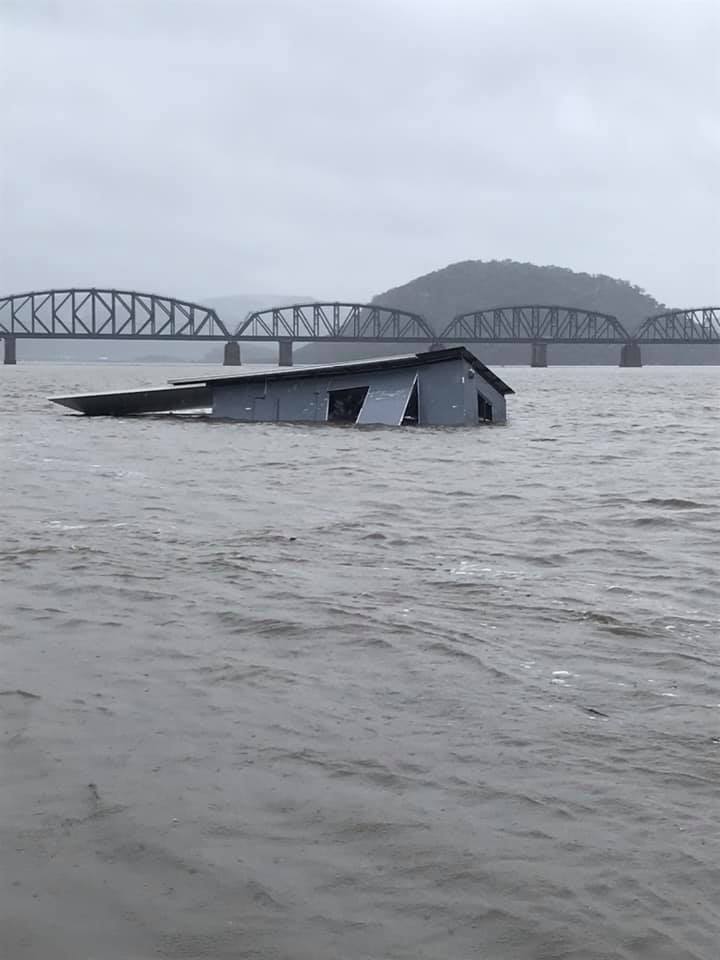
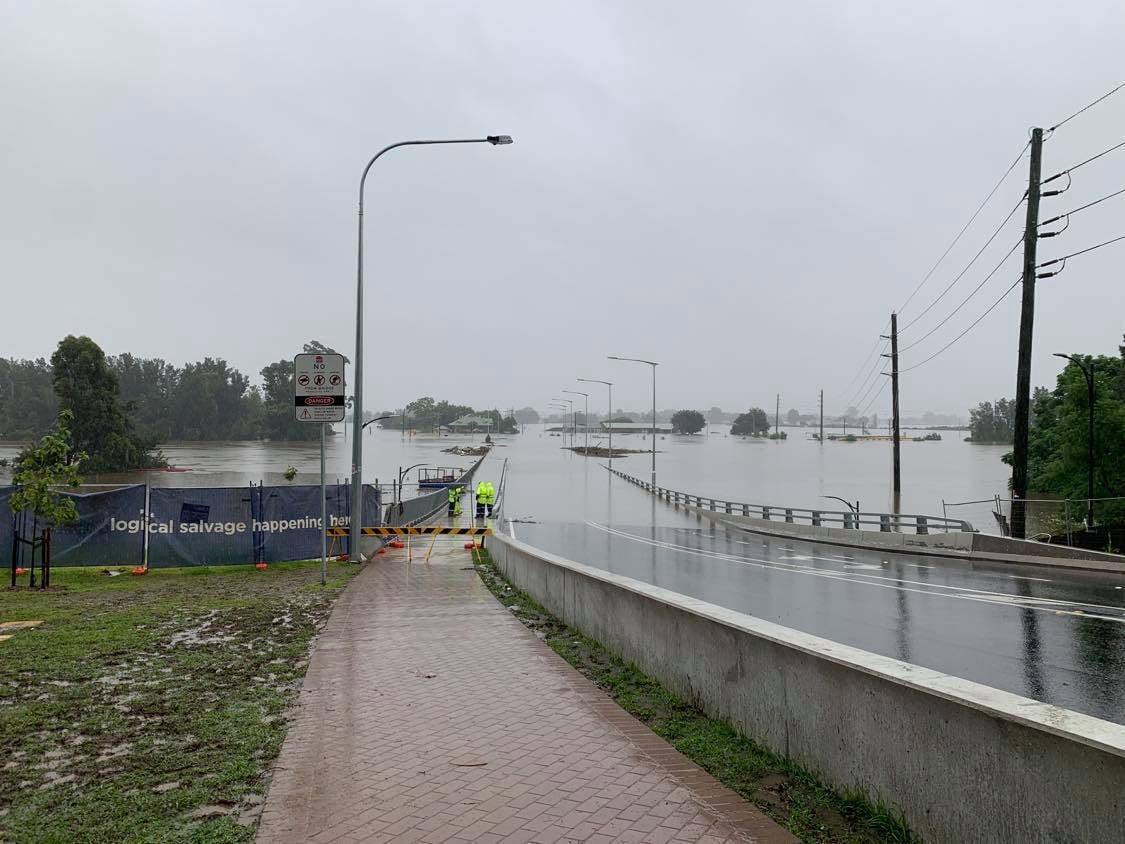
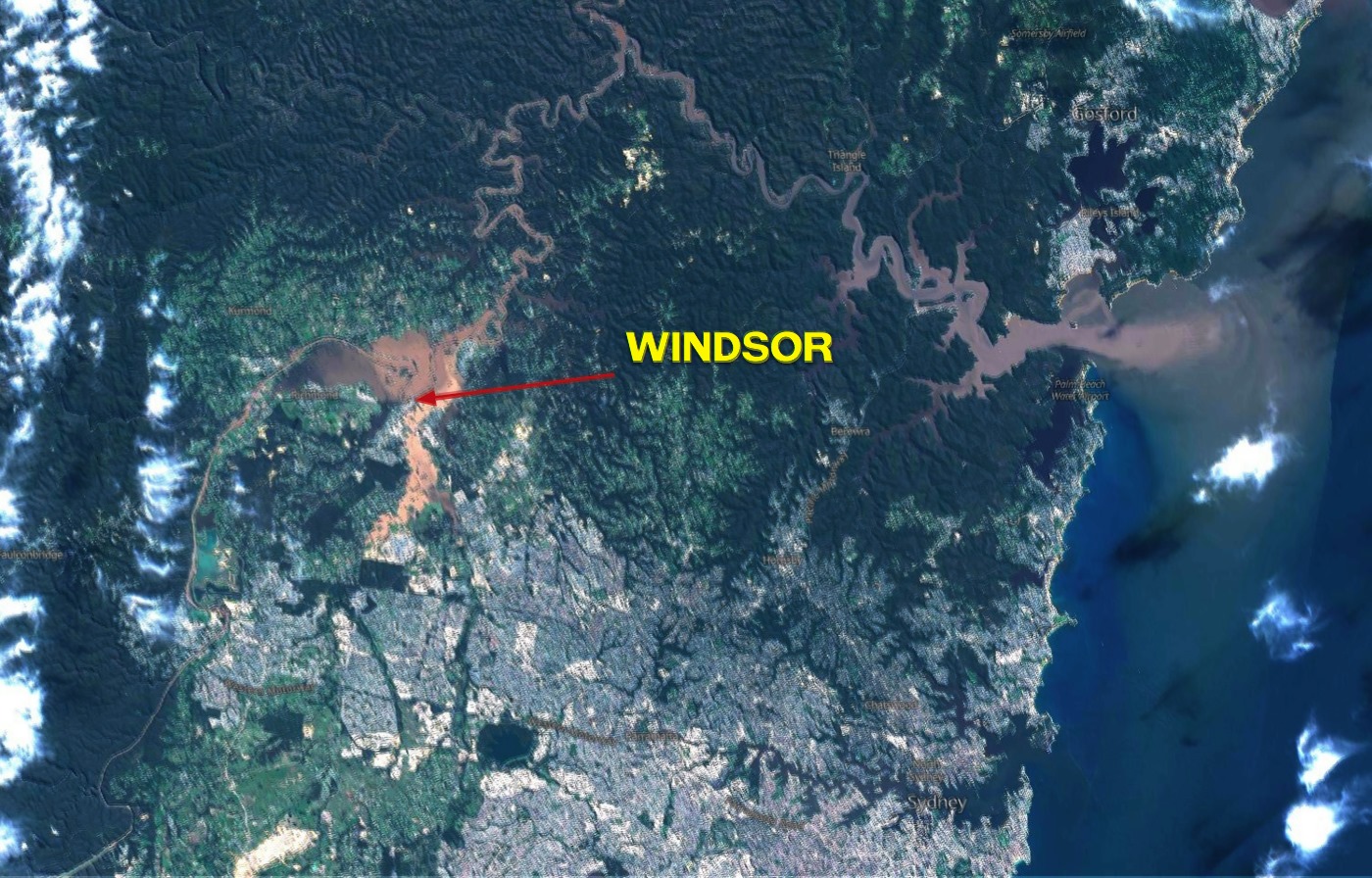
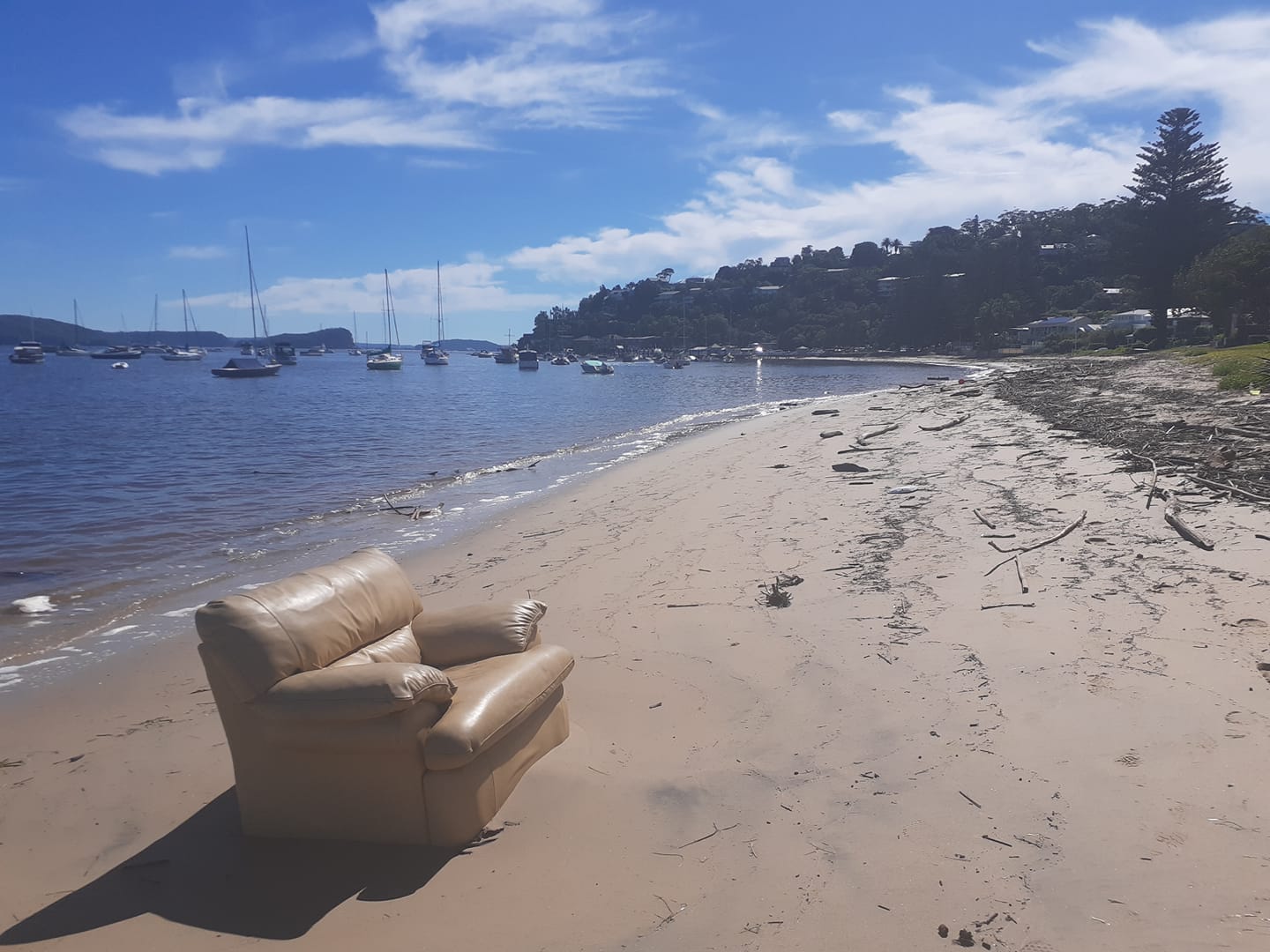
There are seven creeks and four rivers that flow into the Hawkesbury River; Cattai Creek, South Creek, Little Cattai Creek, Roberts Creek, Colo River, Webbs Creek, Grose River, Nepean River, Macdonald River Mangrove Creek and Marramarra Creek. The Hawkesbury River and its tributaries encircle Greater Sydney on its north side.
The Hawkesbury River has its origin at the confluence of the Nepean River and the Grose River, to the north of Penrith. Both these two tributaries are substantial rivers by the time they join to form the Hawkesbury River.
The headwaters of the Hawkesbury River, the Avon River, the Cataract River, and the Cordeaux River, rise only a few miles from the sea, about 80 kilometres (50 mi) south of Sydney. These streams start on the inland-facing slopes of the plateau which forms the escarpment behind Wollongong. Flowing north-west, away from the sea, these streams combine to form the Nepean River, and flow north past the towns of Camden and Penrith. Near Penrith, the Warragamba River emerges from its canyon through the Blue Mountains and joins the Nepean. The Warragamba, formed by the joining of the Wollondilly River, the Nattai River, the Kowmung River and Coxs River drains a broad region of New South Wales on the eastern side of the Great Dividing Range. The other principal component of the upper Hawkesbury river system, the Grose River, rises in the area of Mount Victoria in the Blue Mountains.
Once formed, the Hawkesbury River proper flows generally northwards, albeit with a significant number of meanders. Initially the river passes the towns of Richmond and Windsor, which are the largest settlements on the river. As it flows north, it enters a more rural area, with only small settlements on the river. On this stretch it passes Sackville and Lower Portland, where it is joined by the Colo River. The Colo River and its tributaries drain the northern section of the Blue Mountains.
However, the connections remain, between the people living in either place and as seen by this week's floods and the amount of items and debris turning up in the estuary and along the peninsula's northernmost beaches; Palm, Whale, Avalon, Newport and Bungan Beaches - anywhere the river sweeps its brown muddy tide out into the ocean and that sweep sit back in.
Although baby car seats and wheels for vehicles may not have come ashore during earlier times, the river did bring down a lot of refuse to rest on the estuary shores and beaches, including cattle, pigs riding on whole haystacks and even the crops being brought in but not brought to market.
Earlier reports also speak of 'foam like snow' alike that played in by local children on Sunday March 21st as the weather event rolled in.
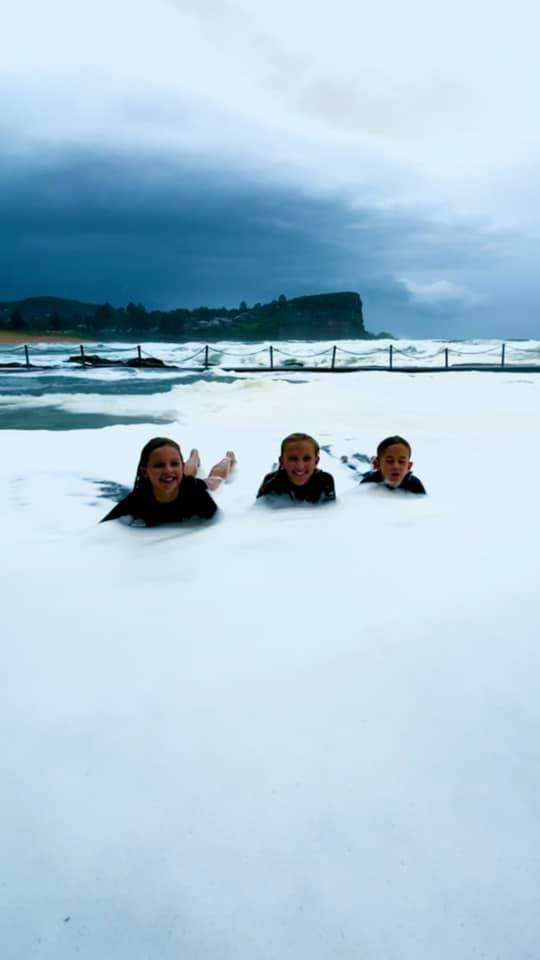
Playing safely in Avalon ocean rock pool on Sunday April 21, 2021 - photo by Adriaan van der Wallen
Then too, Pittwater people came to the aid of those in danger or isolated by floods.
One of Pittwater's earliest patriarchs, Andrew Thompson of Scotland Island is among the colonialists records as one who came to the aid of those caught in Hawkesbury floods on at least two occasions, and ultimately lost his own life due to an illness that developed as a result of his efforts. The year 1806 was a bad one for the Hawkesbury in terms of a flood that occurred in early April that carried away many people, housing and livestock which were carried down the river and landed in Pittwater and on our beaches. Some notes from the pages of the past:
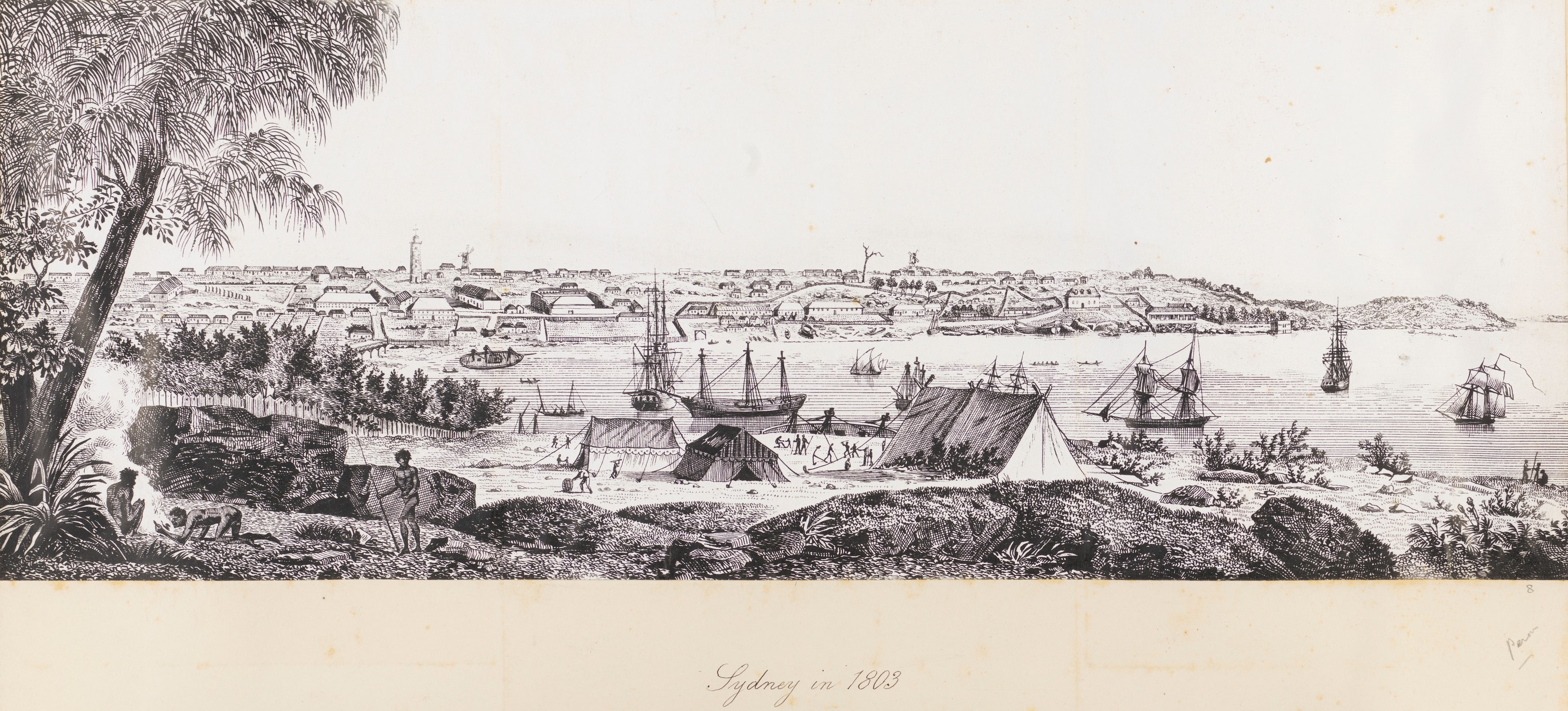
We feel ourselves happy in informing the Public, that Mr. Andrew Thompson's boat, stated to have been dashed to pieces on her passage to Sydney, was not totally lost, although she sustained much damage. Classified Advertising. (1803, May 15). The Sydney Gazette and New South Wales Advertiser (NSW : 1803 - 1842), p. 1. Retrieved from http://nla.gov.au/nla.news-article625574
BOATS - On Monday came in from Hawkesbury the William Mary, Miller; on Tuesday the Union, Jones; Hope, Smallwood; William, Grant and Kearns; Hope, Thompson; all laden with corn. By the Union the three men wrecked in Broken Bay were brought in; the particulars of which are contained in the preceding page. SHIP NEWS. (1803, May 29). The Sydney Gazette and New South Wales Advertiser (NSW : 1803 - 1842), p. 4. Retrieved from http://nla.gov.au/nla.news-article625598
A strong well-built Sloop, from 35 to 40 tons burthen, belonging to Mr. Andrew Thompson, was on Saturday the 17th instant launched at the Green Hills, Hawkesbury. Mr. Thompson has another vessel of nearly the same size now on the stacks, which will be shortly ready to launch. SYDNEY. (1803, September 25). The Sydney Gazette and New South Wales Advertiser (NSW : 1803 - 1842), p. 3. Retrieved from http://nla.gov.au/nla.news-article625792
The New Hawkesbury Sloop, built at the Green Hills, Mr A Thompson, owner, came round for the first time on Monday 1st, with 1160 Bushels of Wheat, on from Cornwallis Farm, cultivated by Government, and could have taken in with safety 250 more. This vessel called the Nancy, was built under the sole management and direction of Mr. Kelly, formerly chief mate of the Eliza whaler, who also navigates her. Her computed burthen is 40 tons, carries 5 men, and has 4 swivels mounted on her quarter railing. Connoiseurs find no other fault with her than on account of her being rather "shallow in the Bow." SYDNEY. (1803, October 23). The Sydney Gazette and New South Wales Advertiser (NSW : 1803 - 1842), p. 2. Retrieved from http://nla.gov.au/nla.news-article625840
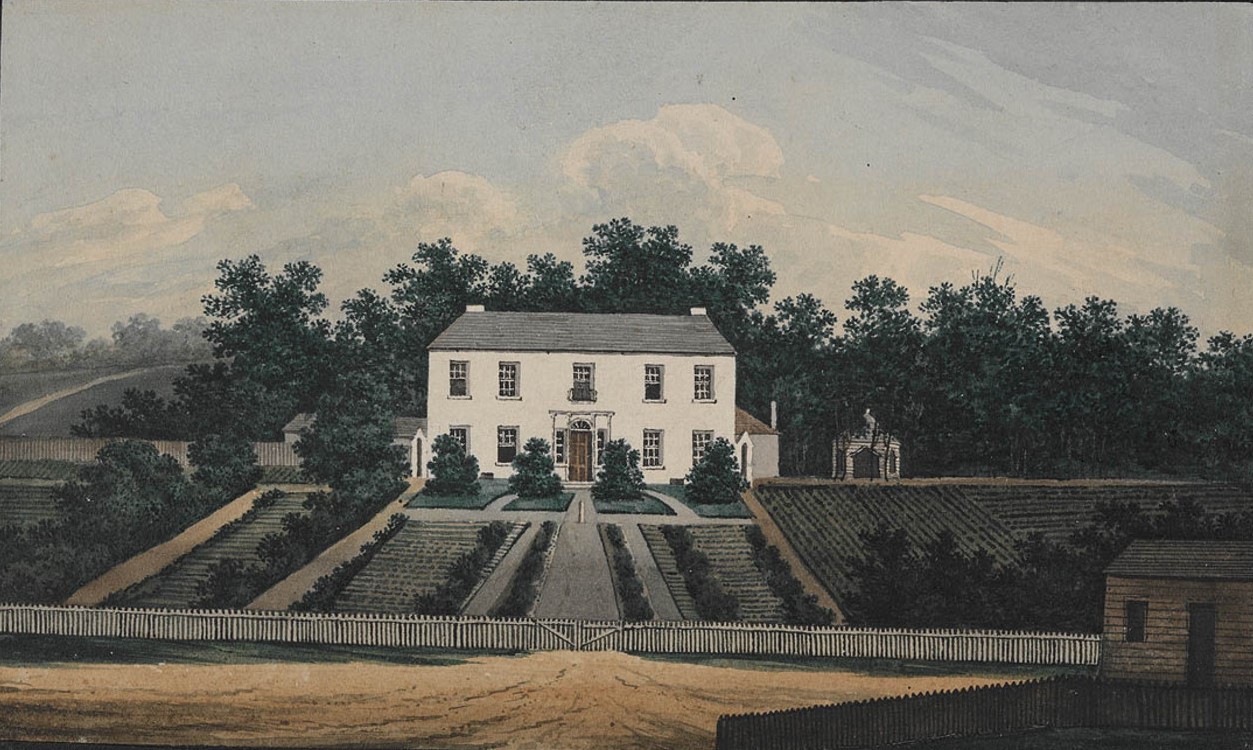
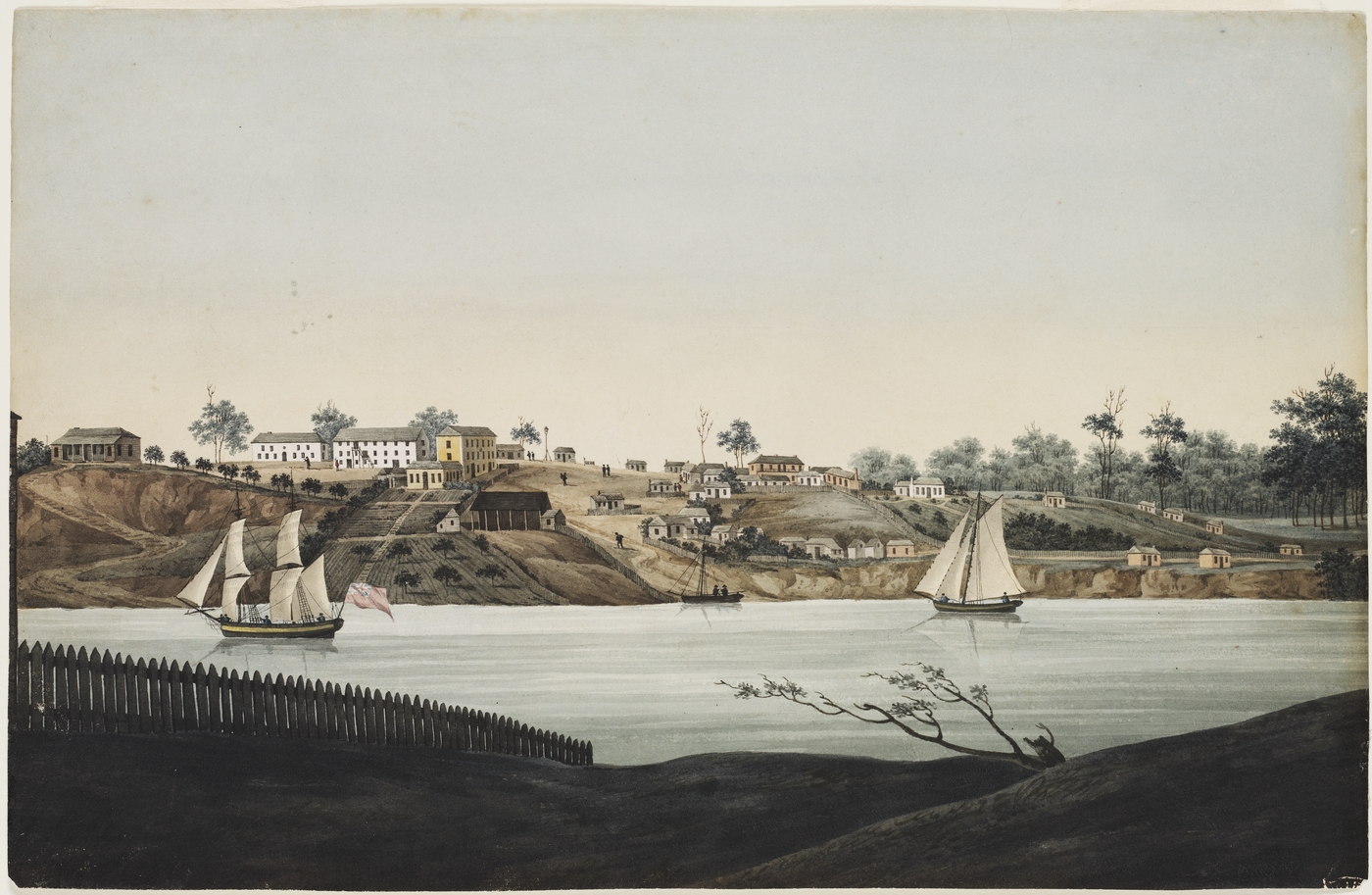
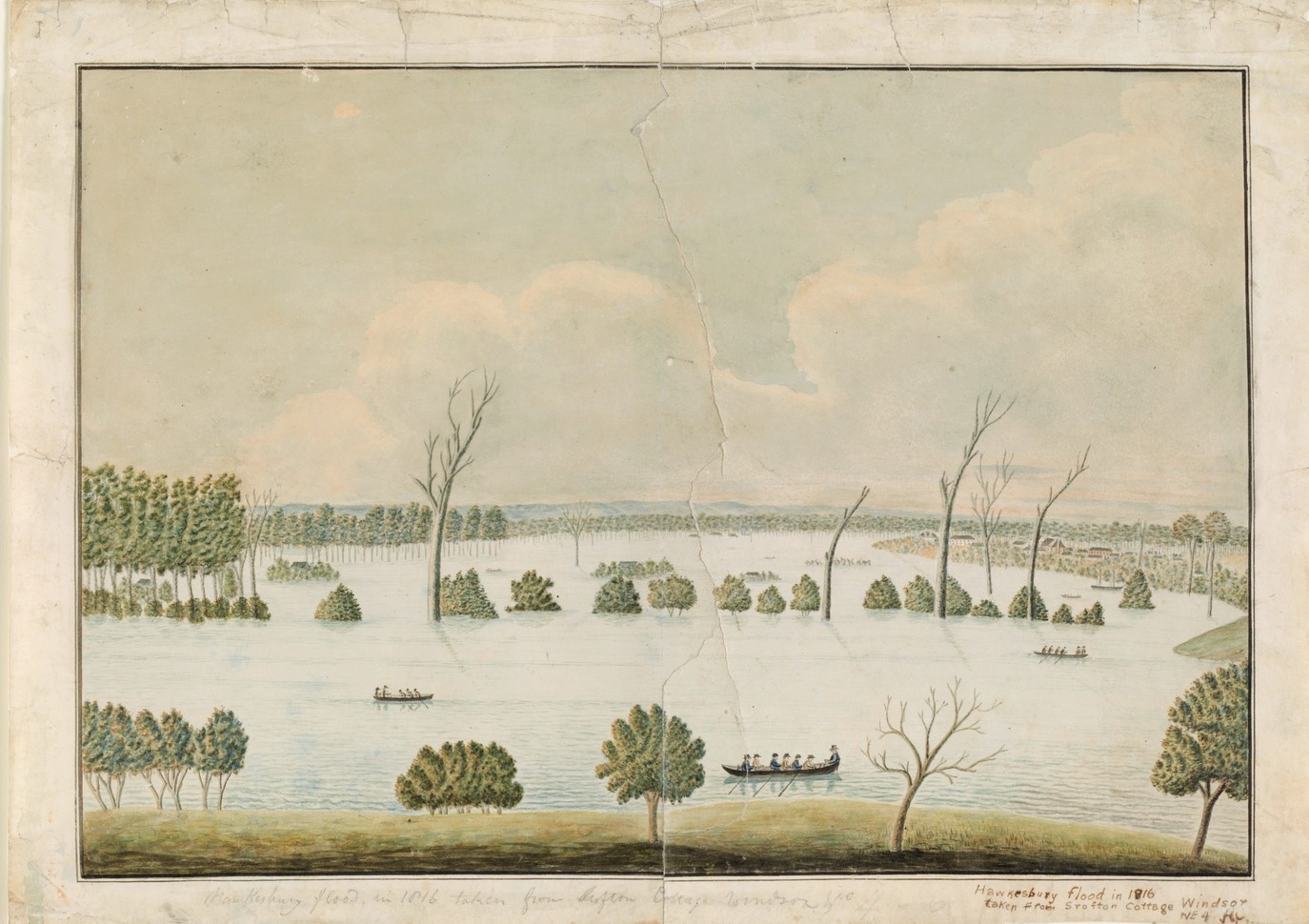
SELFE-On the 13th April, accidentally drowned during a flood in the river, Henry Selfe, of Warragamba, banks of the Nepean, and 22, Lower Fort-street, Sydney, late of Kingston-upon-Thames, aged 62 years. Family Notices (1867, April 29). Empire (Sydney, NSW : 1850 - 1875), p. 1. Retrieved from http://nla.gov.au/nla.news-article60839422
Six weeks elapsed prior to the funeral-more light is shed on how long it took to find the poor man's body under the records of her mother's passing, in 1902, further down this page. That someone can give the date he passed shows someone witnessed the floodwaters taking him.
FUNERAL.—The Friends of the late HENRY SELFE are informed that his funeral will leave Penrith for Mulgoa Church on the arrival of the first train from Sydney, THIS DAY, Tuesday. Family Notices (1867, May 21). The Sydney Morning Herald (NSW : 1842 - 1954), p. 8. Retrieved from http://nla.gov.au/nla.news-article28611119
The year 1902 was when Maybanke's mother Elizabeth (Bessie) passed away at her son Henry's home. This Notice gives us further insight into where her husband died just months prior to his daughter's marriage and why it took so long to lay him to rest:
Beyond the Veil.
SELFE.
There passed away on Wednesday last, at her residence, in one of the suburbs, Mrs Selfe, aged 91 years, mother of Mr Norman Seife, Sydney's eminent engineer. Mrs Selfe and her husband had a home, away back in the early sixties, on the piece of land now occupied by Mr H Bennett, on the rise at the junction of the Nepean and Warragamba Rivers, where they had proposed to establish a large orchard, vineyard, etc, and had built a very comfortable cottage. One of our biggest floods came along just as they had got everything in going order. Owing to the gorge just below the junction, in time of flood the river rises to an enormous height—somewhere about 100 feet above summer level.
The late Mr Selfe attempted to cross the stream on to Fairlight Estate, and was washed down; his body being recovered, some time after the water had subsided, below Emu Plains. The shock was so great that the family afterwards abandoned the place. The late Mrs Selfe was a noble woman, and her son is one of our best and most respected colonists. His remains were interred in St. Thomas' Church of England Cemetery, Mulgoa. Beyond the Veil. (1902, January 25). Nepean Times (Penrith, NSW : 1882 - 1962), p. 3. Retrieved from http://nla.gov.au/nla.news-article100911566
T. MICHAEL'S ARCH.
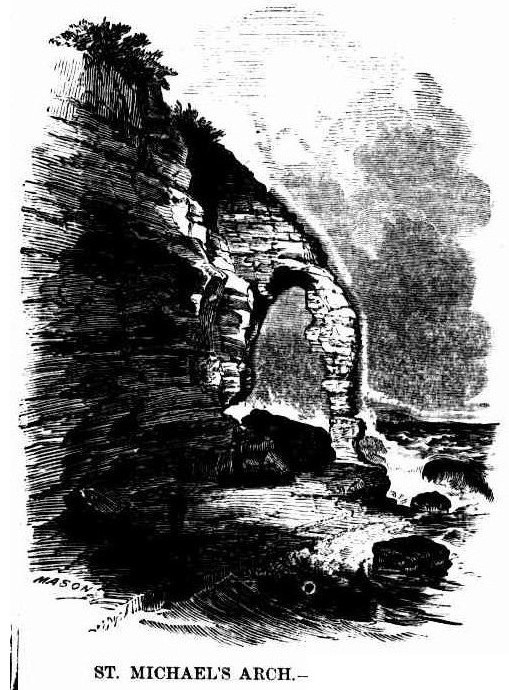 This beautiful Arch is situated on the estate of the late Very Reverend J. J. Therry, about three miles south of Broken Bay. As the scenery along. the coast from Manly Beach to the Bay is of the loveliest description, we advise all lovers of the picturesque to hire a spring cart from Mr. Miles - who lives about half a mile from the Pier Hotel - and proceed, early in the morning, to Mr. Collins' house, about thirteen miles distance, so as to be able to inspect this extraordinary specimen of natural architecture, and to return to Manly the same day if necessary.
This beautiful Arch is situated on the estate of the late Very Reverend J. J. Therry, about three miles south of Broken Bay. As the scenery along. the coast from Manly Beach to the Bay is of the loveliest description, we advise all lovers of the picturesque to hire a spring cart from Mr. Miles - who lives about half a mile from the Pier Hotel - and proceed, early in the morning, to Mr. Collins' house, about thirteen miles distance, so as to be able to inspect this extraordinary specimen of natural architecture, and to return to Manly the same day if necessary.
As this excursion may gradually become fashionable, we quote a description of the places on the road from the late Postmaster- General Raymond's valuable work, the "Post Office Directory for 1855."
"Seven and a half miles from North Harbour, - Jenkins' house ; the road for the last mile along a level sandy beach. On the left is Narabeen lagoon. Mr. Jenkins has a snug house here, and much land in cultivation, which is an agreeable prospect - from the sea.
Eleven and a half miles from North Harbour -Hut on the sea shore. The path from the Pennant Hills Road reaches the sea, and joins this coast road at the farm of one Foley - a tenant of. Mr. Wentworth's ; the distance from thence being twelve miles.
About half a mile further on is the south-east arm of Pitt Water, on which there are some small cultivated farms. The head of Pitt Water as seen from the heights along which the road or path leads, is equal to any lake scenery, and there are many romantic spots, with good land, on its banks, which might be converted into good farms.
Thirteen miles from North Harbour - Several farms and cottages.
Fourteen miles- The Rev. Mr. Therry has a grant here. Fourteen and three-quarter miles - The Hole-in-the-Wall, being a rocky projection forming a rude archway with the shore."
The arch mentioned by Mr. Raymond is about twenty-two feet across the inside, and between thirty and forty feet high underneath. The rocks, of which it forms a part, are seventy feet in height - the colours of these rocks are exceedingly beautiful. At low water the visitor can pass through the arch.
Ascending the cliffs, a view of Pitt Water is beheld, being the harbour belonging to this estate. If an arrangement were madeto have a small steamer plying along the beautifully wooded, lofty, and precipitous shores of the Hawkesbury River, parties of travellers could meet it at this spot, avoiding the disagreeable sea voyage by coming from Manly by land. The steamer could convey them from Mr. Collins' house to Windsor, and the train would take them back to Sydney - it being understood that the Windsor railway will shortly be completed.
Illustration: ST. MICHAEL'S ARCH.
ST. MICHAEL'S ARCH. (1864, October 15). Illustrated Sydney News (NSW : 1853 - 1872), p. 3. Retrieved from http://nla.gov.au/nla.news-article63512130
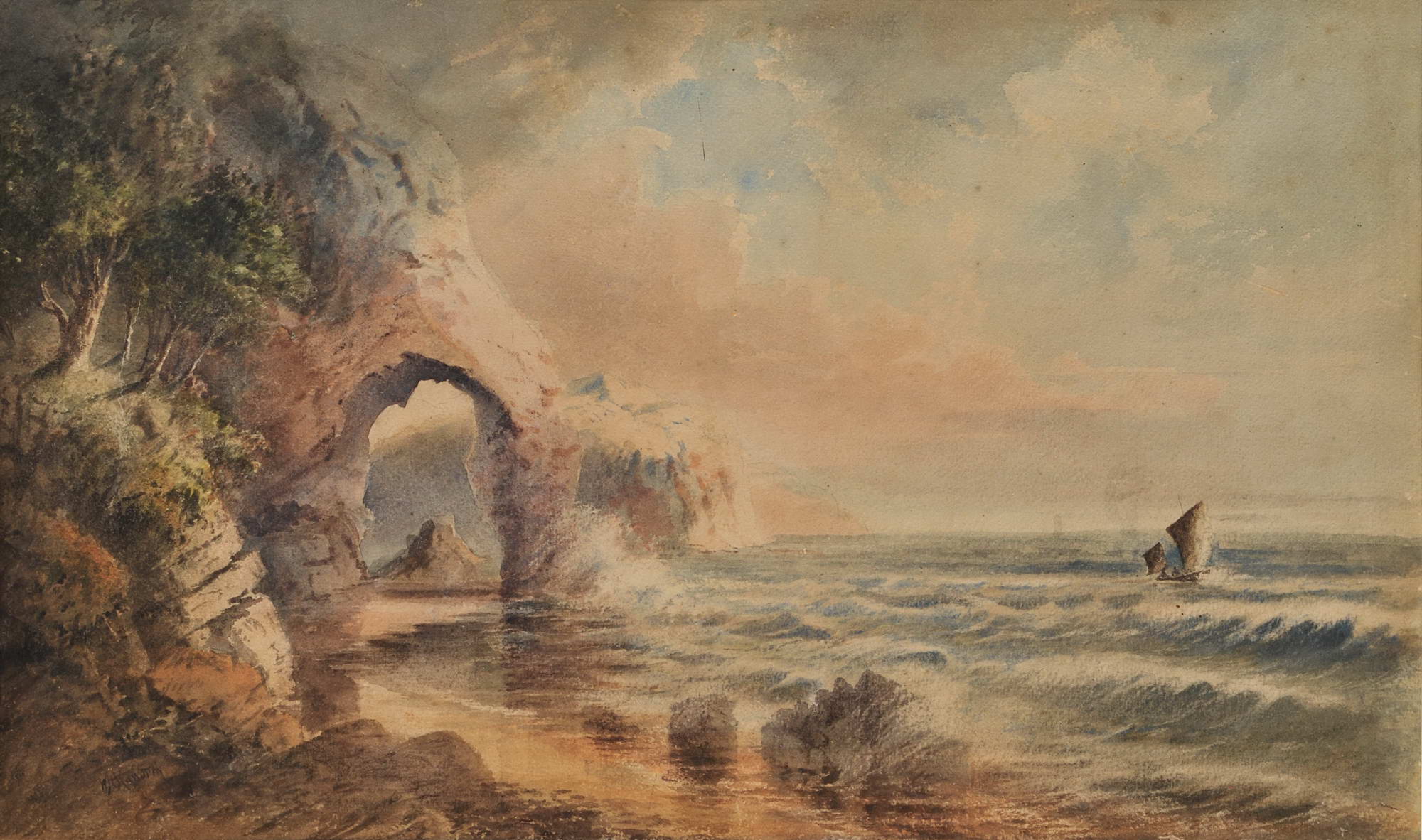
W.H. Raworth (Brit./Aust./NZ, c1821-1904). St Michael’s Arch, NSW [Avalon] c1860s. Watercolour, signed lower left, obscured title in colour pencil verso, 34.2 x 56.5cm. Tear to left portion of image, slight scuffs and foxing to upper portion. Price (AUD): $2,900.00 at:https://www.joseflebovicgallery.com/pages/books/CL181-53/w-h-raworth-c-brit-aust-nz/st-michaels-arch-nsw-avalon
St. Michael's Arch 1867 - The storm that turned an arch into a pedestal:
BROKEN BAY.
[FROM OUR CORRESPONDENT]
June 24 – We have had tremendous weather, but, as far as Pitt Water is concerned, no damage has been done with the exception to one of our picturesque curiosities, St. Michael’s Arch. It has at length to the too mighty elements and the destroying influence of time, that which was the admiration of all who have beheld it is now almost baseless fabric-there is only about one half of the outer support left, looking at it at a distance it has the resemblance of a coloured pillar. In its fall it carried a large portion of the overhanging rock with it, a thousand tons of gigantic boulders, and in such masses that I think it will stop the ingress from that part to the cave, but at yet we have had no close inspection for the rollers are dashing to the height of the stupendous rocks. The only idea I can give of the gale is that the froth of (not spray) the sea came over Mount St. Joseph, opposite the house, half a foot in size, and spread itself down to the dam, at times shading the heights of the mountain,-its resemblance was that of an overwhelming snow storm.
The sea at Barranjoey washed away the flower garden in front of the Chinamen's huts, taking soil and all, so that the beach comes close up to their door. There must have been awful havoc in the Hawkesbury, for all the beaches from Barranjoey to the Long Beach are strewn with fragments of houses, boxes, chairs, door frames, dead pigs, hay, wheat, broken bedsteads, weather-board sides of houses, oranges with large branches, pumpkins, melons, corn cobs, and other debris, that scarcely any portion of the beaches can be seen. Mr. Conolly picked up a workbox, in which was contained a number of receipts and letters directed to Mr. Moss, Windsor. The beaches on which are the debris is Barrenjoey, Whale Beach, Collins's Beach, Mick's Hollow Beach, Farrell's Beach, Mona Beach, and Long Beach, so it may be imagined the great extent of destruction. BROKEN BAY. (1867, June 27). The Sydney Morning Herald (NSW : 1842 - 1954), p. 2. Retrieved from http://nla.gov.au/nla.news-article13144304
BROKEN BAY. [From the Herald's Correspondents.]
June 24. — We have had tremendous weather, but, as far as Pitt Water is concerned, no damage has been done, with the exception to one of our picturesque curiosities, St. Michael's Arch. It has at length yielded to the too mighty elements and the destroying influence of time,— that which, was the admiration of all who have beheld it is now almost a baseless fabric,— there is only about one half of the outer support left, looking at it at a distance it has the resemblance of a colossal pillar. In its fall it carried a large portion of the overhanging rock with it, a thousand tons of gigantic boulders, and in such masses that I think it will stop the ingress from that part to the cave, but as yet we have had no close inspection, for the rollers are dashing to the height of the stupendous rocks. The only idea I can give of the gale is, that the froth of (not spray) the sea came over Mount St. Joseph, opposite the house, half a foot in size, and spread itself down to the dam, at times shading the heights of the mountain, — its resemblance was that of an overwhelming snow storm. The sea at Barranjoey washed away the flower garden in front of the Chinamen's huts, taking soil and all, so that the beach comes close up to their door. There must have been awful havoc in the Hawkesbury, for all the beaches from Barrenjoey to the Long Reach are strewed with fragments of houses, boxes, chairs, doorframes, dead pigs, hay, wheat, broken bedsteads, weatherboard sides of houses, oranges with large branches, pumpkins, melons, corn cobs, and other debris, that scarcely any portion of the beaches can be seen. Mr. Conolly picked up a workbox, in which was contained a number of receipts and letters directed to Mr. Moss, Windsor. The beaches on which are the debris is Barrenjoey, Whale Beach, Collins's Beach, Mick's Hollow Beach, Farrell's Beach, Mona Beach, and Long Reach, so it may be imagined the great extent of destruction. BROKEN BAY. (1867, June 29). Sydney Mail (NSW : 1860 - 1871), p. 11. Retrieved from http://nla.gov.au/nla.news-article166799304
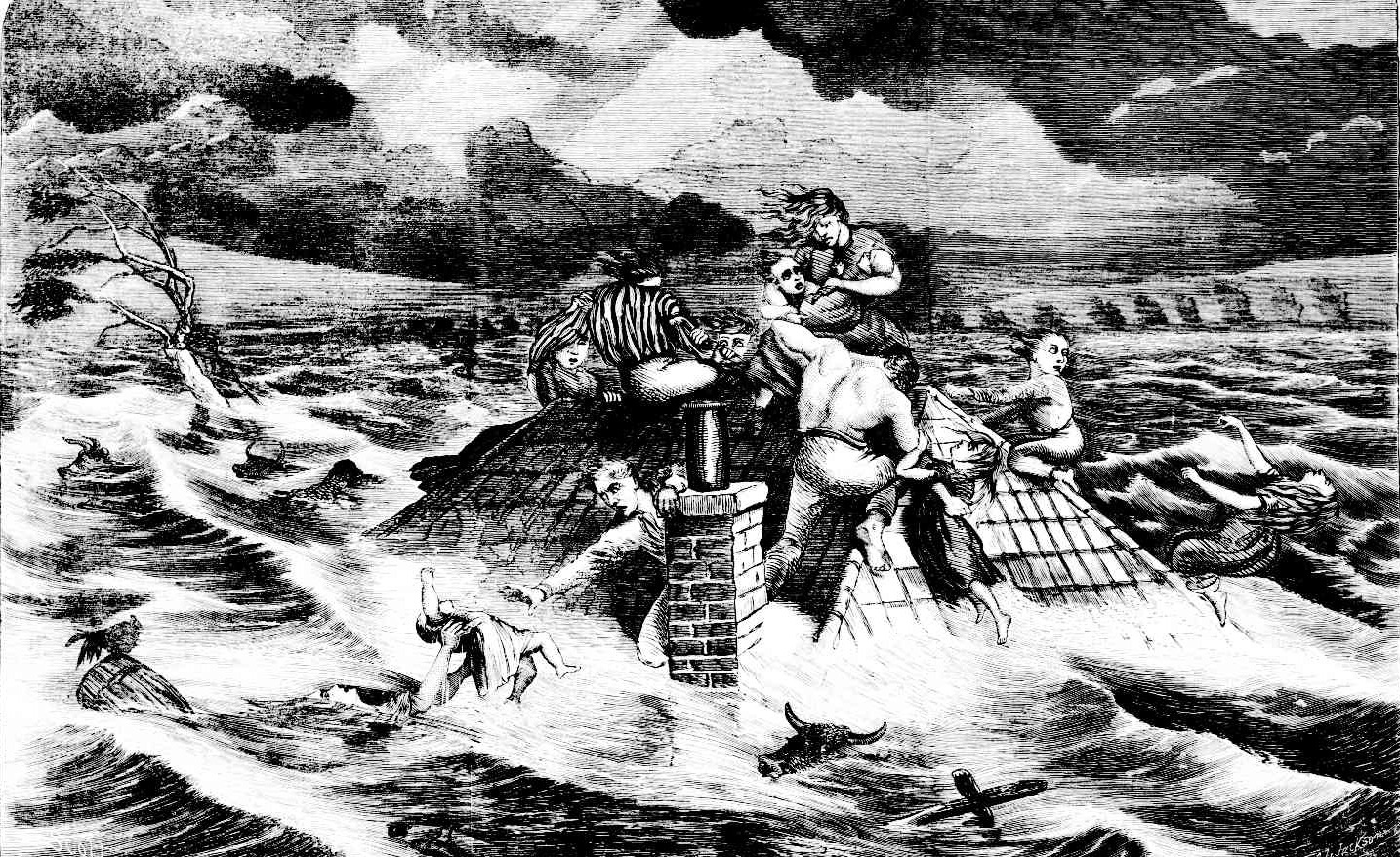
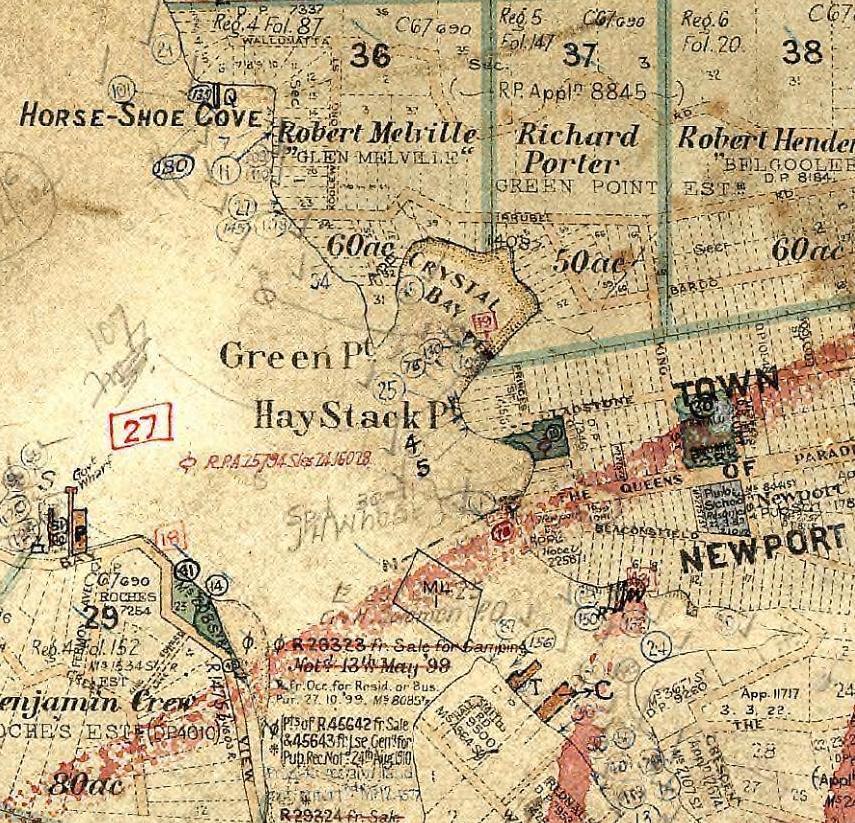
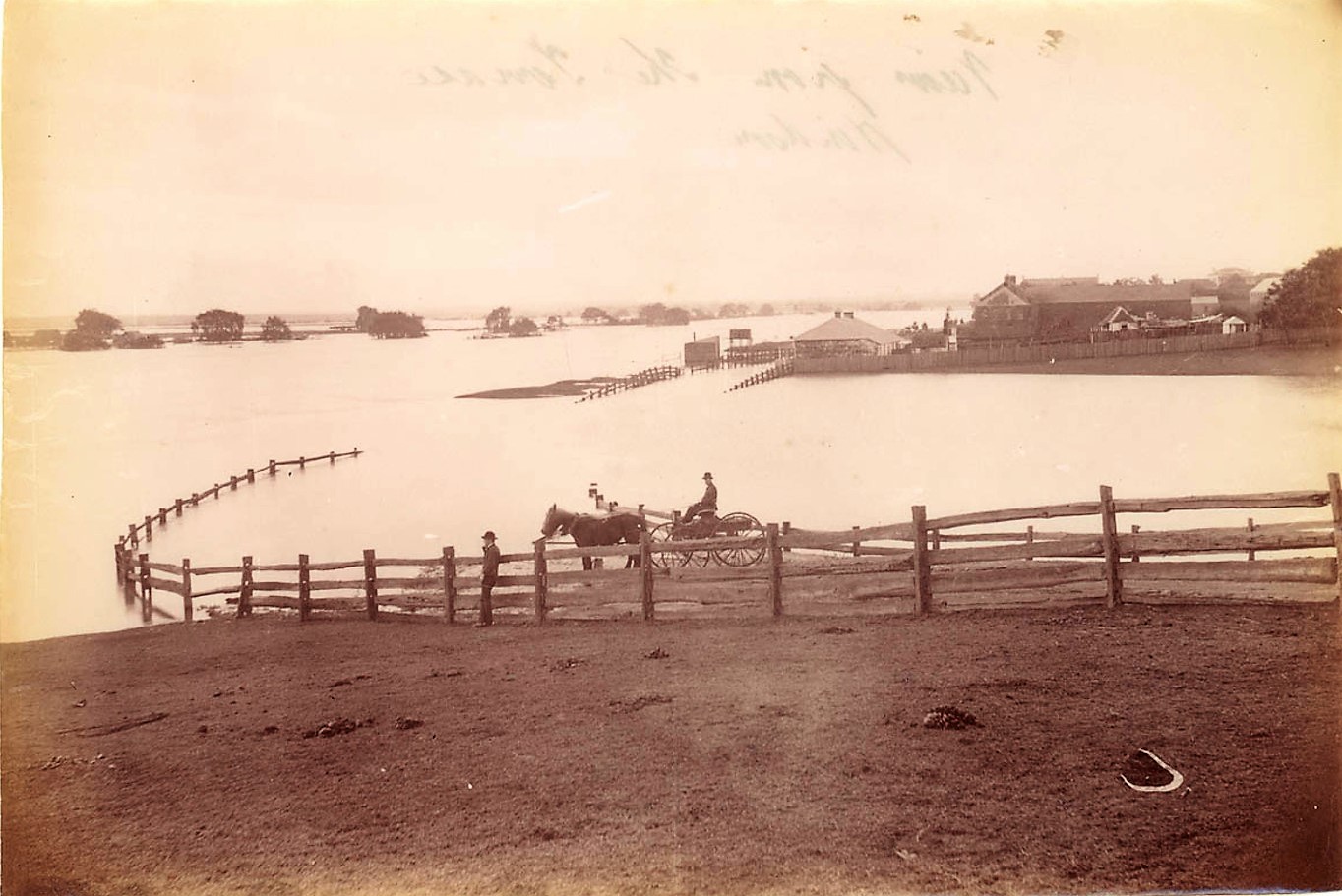
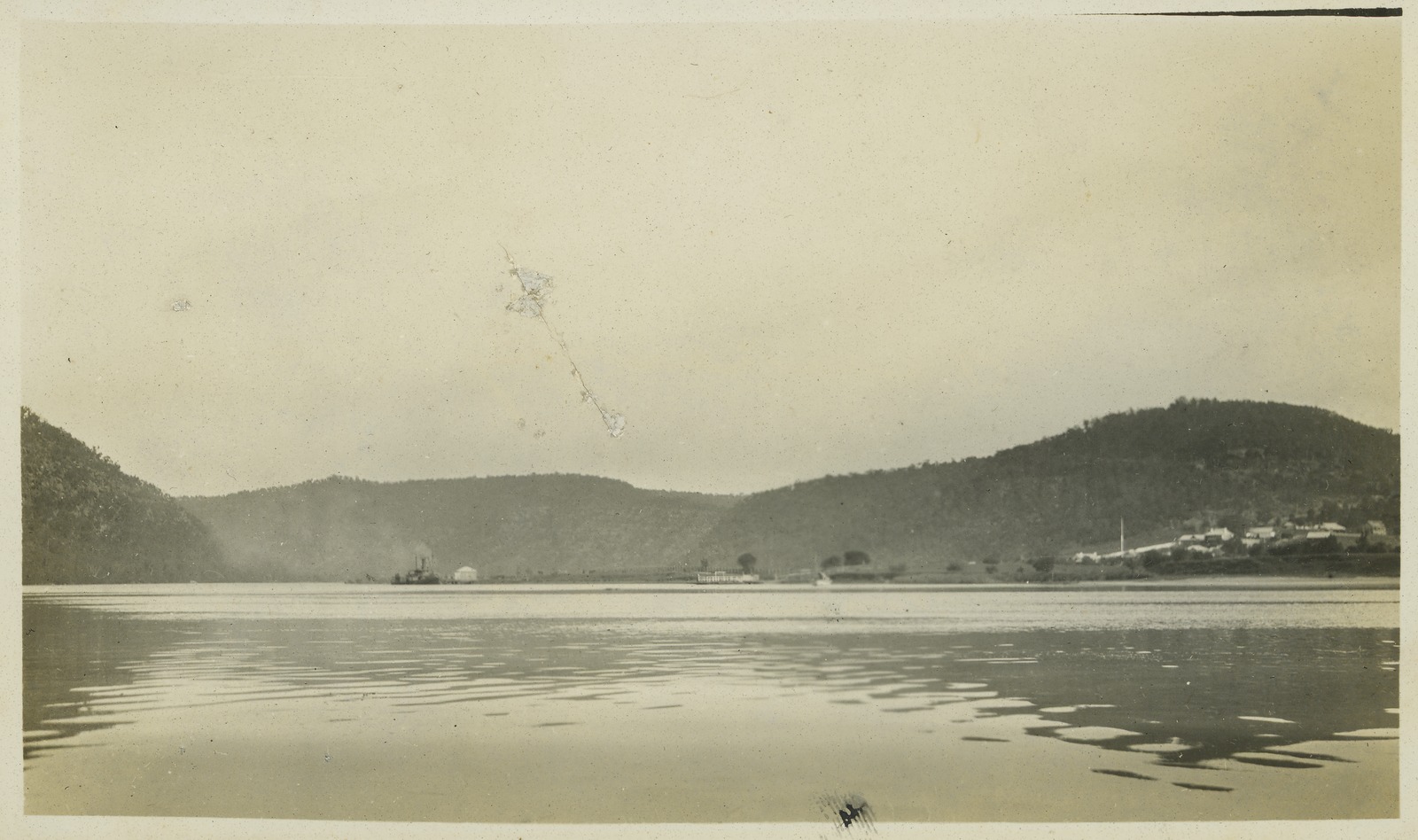
Another storm, and its effects, gives you some idea of the quirks of ocean, tide and wind and how they affect what places look like and what they can bring in to our beaches:
Surf Full Of Melons
Hundreds of big jam melons that had been carried out to sea by the Hawkesbury River flood, were washed up in the surf at Avalon Beach yesterday. Most of them were in sound condition despite their long journey - possibly 50 miles. They were quickly snapped up by scores of local residents and visitors. Mr. Ronald Hogg, who lives nearby, said that people went to the beach on foot and in cars and trucks, which they loaded with melons. Others staggered away with chaff bags full. Apparently the melons had been swept by floodwaters from farms along the upper parts of the Hawkesbury. Surf Full Of Melons. (1949, June 20). The Sydney Morning Herald(NSW : 1842 - 1954), p. 4. Retrieved from http://nla.gov.au/nla.news-article18119781
However this flood too had devastating repercussions, with lives lost as well as homes and livelihoods:
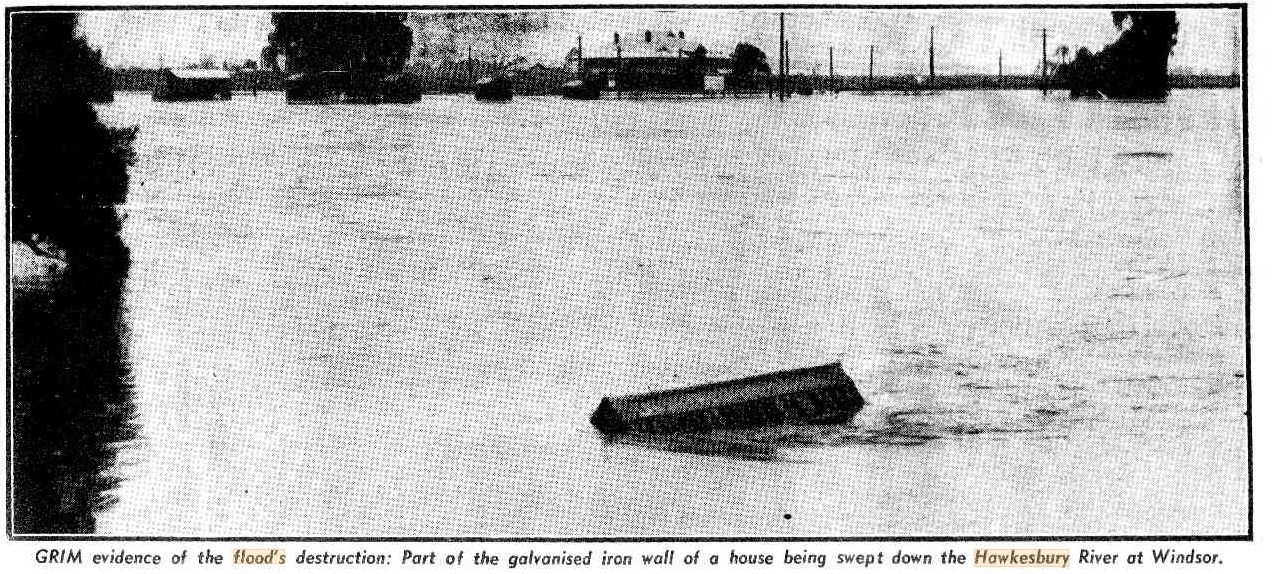
NINE FEARED DEAD AS FLOODS SWEEP TOWNS (1949, June 19). The Daily Telegraph (Sydney, NSW : 1931 - 1954), p. 1. Retrieved from http://nla.gov.au/nla.news-article248243271
The following June at Newport beach:
FOAM
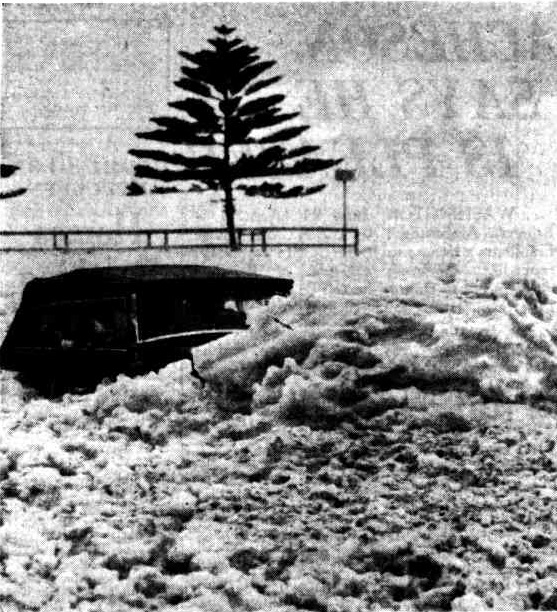
An optimistic motorist drives his sports car through the five feet of foam, which yesterday covered the whole of the camping and parking areas and the beach at Newport. No title (1950, June 25). The Sunday Herald (Sydney, NSW : 1949 - 1953), p. 3. Retrieved from http://nla.gov.au/nla.news-article18478326
FOAM
In the Sydney Morning Herald, 'Kanangra,' dealing with the gales of April, 1861, has this to say about the foam: —
Gales lashed the coast for seven days, keeping the sailing 'ships overlong in port at Sydney and Newcastle.
At Port Macquarie the seas were breaking miles off the coast, and foam in the bays stood twelve feet deep until' the wind changed. Then the foam 'covered the surrounding hills as in a snowstorm.'
The vast blanket of sea foam that invaded some Sydney, beaches in the recent cyclone is puzzling scientists. The week before last issue of the 'Sunday Herald' showed a picture of a car ploughing through the foam at Newport. Next day, thousands of people visited the northern beaches — and went home baffled. And small wonder. The snow-like froth they saw covered many acres and much of it was several feet deep. There were two peculiarities about this foam: it stuck for a surprising time, and it occurred only between Manly and Palm Beach. There was hardly any foam on the southern beaches, and none at Cronulla. Sydney scientists believe there must have been something unusual in the sea water to make the bubbles stay put; some substance that gave it- a soapiness or oiliness. One theory is that this substance came from the storm-pulverised bodies of myriads of minute jelly fishes and the like, and from seaweeds. If that is so, why wasn't there a foam blanket along more of the coast?
My own theory is that this substance, probably partly mineral and partly organic, was brought down to the sea by the flooded Hawkesbury River. The south-flowing Notonectian current would carry some of it past Palm Beach and the others, after it got through Broken Bay. Maybe some of this material was the very finest particles of clay, which has 'sticky' qualities.
Gradually, under the impetus of the onshore wind, the ever-growing mass of bubbles was literally pushed up the beach— and finally across on to the grassy foreshores. [The foam was a magnificent sight at Port Macquarie during the recent gales and floods; -in the early 1930's, during 'a gale, there was also a great mass of foam on Oxley Beach, where a tent, in which people were- living was completely engulfed]. FOAM (1950, July 14). The Port Macquarie News and Hastings River Advocate (NSW : 1882 - 1950), p. 1. Retrieved from http://nla.gov.au/nla.news-article112552881
The harvesting of melons brought ashore brings in the reminder that our area was once a farming district and at Warriewood and Mona Vale, remained so into the 1950's, althoiugh these areas, too, were prone to floods and the loss of crops as a result:
MONA VALE DRAINAGE.
The council engineer has come to the conclusion that owing to the lowness of the land between Mona street and the outlet, and it being subject to tidal waters, nothing of any practical value can be done without large expense in reclamation. This the council would not be justified in undertaking, and the matter resolves itself into preventing the salt water from flowing up the drains Into private property. He holds, that owners of the property by a small combined effort should be able to safeguard their own interests by constructing inexpensive self-acting flood gates. This is done throughout all the country districts. MONA VALE DRAINAGE. (1909, April 2). The Sydney Morning Herald (NSW : 1842 - 1954), p. 9. Retrieved from http://nla.gov.au/nla.news-article15047734
Heavy Storm Damage on Mona Vale Farm
CROPS on Mr. James Joyce's vegetable farm at Mona Vale were devastated by the recent cyclonic storm when 24 inches of rain, accompanied by high winds and hail, was registered in the district in a few days.
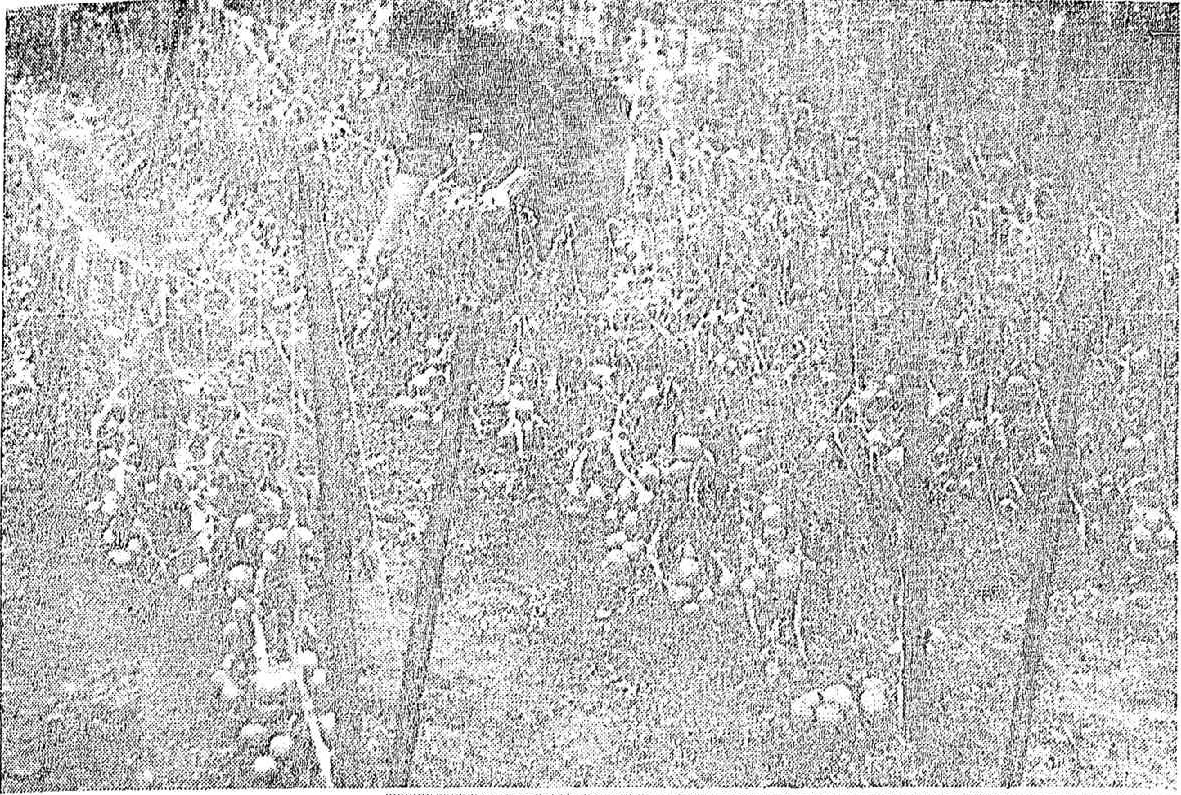
Only a fortnight previously thin property had been visited by "The Land." At that: time, as reported in "The Land," the famous celery beds were a picture, the tomato vines were carrying great clusters of extra prime fruit ready for the pickers, and thousands of cabbages and cauliflowers were in extra prime condition.
A return visit last week, however, disclosed a scone of utter desolation so far as the lower and more heavily yielding section of the farm was concerned.
' In this area two feet of water had covered the flat which is only four inches above sea level. The flood killed out the entire cabbage and cauliflower crops, after the fierce cyclonic blow had actually torn numbers of the plants out of the soil. Fortunately a proportion of the cabbage' crop had been, harvested, but some 6,000 head were destroyed together with 10,000 cauliflowers, many of them due for cutting next month.
The bulk of the uncut celery came through fairly well, but the dreaded chocolate leaf .spot, hitherto kept under control, is spreading rapidly throughout the plants and many heads will be ruined in addition' to those damaged by flood waters.
.jpg?timestamp=1616560511073)
Big Tomato Loss
Possibly the heaviest loss occurred in the tomato section where a crop 'estimated at 1,000 cases has been completely ruined.
Only a few cases had been lifted when the storm struck and completely devastated one of the finest crops to be seen in the district. Grown on a piece of new land, top-pruned and trellised the individual clusters' were of remarkable weight and quality.
An attempt was made to pick some of the biggest specimens while the crop was still under water, but these tomatoes, as they ripen, are now showing the effects of the flooding and most will be unmarketable.
With quality tomatoes realising round £1 a case the loss on this crop alone is a severe one.
Other losses included a crop of peas and seed beds of parsnips, cauliflowers and cabbage. The only crop which seems to have escaped the storm damage is a field of long white squash, sown on a piece of high land and now ready to harvest.
In addition to the loss of valuable crops there is the further serious loss Involved in manures, fertilisers, seed, dusting materials and manpower involved In producing the crops.
"It's all in the game," philosophically remarked Mr. .Joyce to "The Land." "As soon as we can clean up the mess we'll have another try." Heavy Storm Damage on Mona Vale Farm (1946, May 3). The Land (Sydney, NSW : 1911 - 1954), p. 9. Retrieved from http://nla.gov.au/nla.news-article105693193
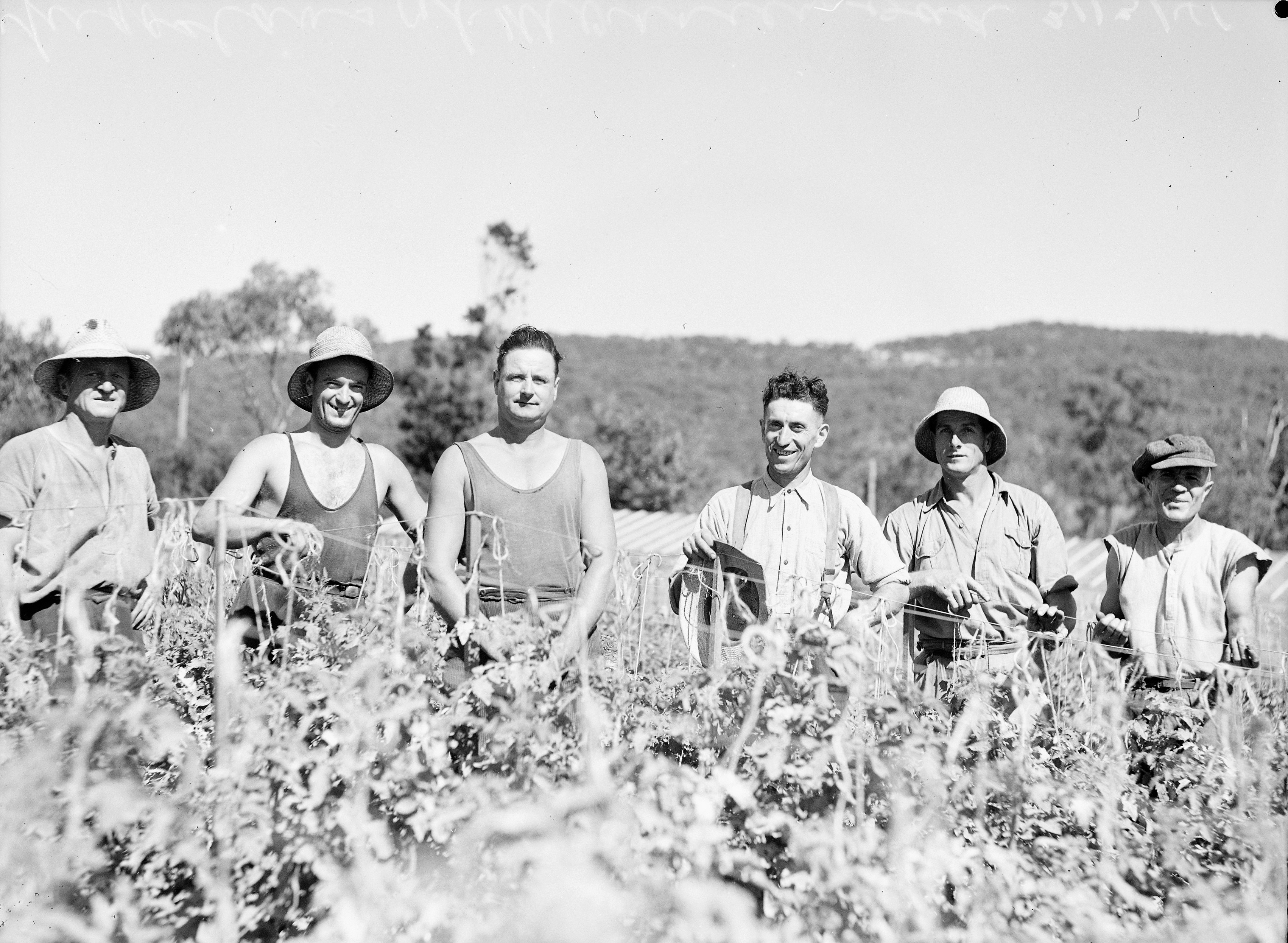
'Yugoslavs at Warriewood', March 8th 1941 Item: e13170_0002_c, courtesy Mitchell Library, State Library of New South Wales
Another flood caused devastation through the loss of life and homelessness in February 1956. This report (below) also shows surf life savers coming to the aid of people in surf boats as well as the NSW SES volunteers. Formed in 1955 following the echoes of the Cold War and fears over being bombed, this organisation was utilised during the devastating Hunter Valley floods of February 1955, which had been preceded by others in the first few years of the 1950's - many of these impacting on people then living at Avalon Beach Camping grounds and that channel that still sweeps all out to the estuary along Careel Creek. The service was seen then as a viable way to respond to future events in a way that could be managed so that those sent in to help were not only equipped with what they needed but had guidance and training to do so:
Following the enactment of State Emergency Service Act, 1989 (NSW), the New South Wales State Emergency Service was established. The NSW SES is made up almost entirely of volunteer members, numbering over 9,000 as of June 2018. Members are easily identified by their distinctive orange overalls. Every state and territory in Australia has its own State (or Territory) Emergency Service. There are 43,000 volunteers spread across the country. Each state or territory is broken into regions, then units, and finally groups or teams.
Surf Boats, able to manoeuvre many hazards during flood events, have been utilised in this manner since they were lifeboats and particularly since one was launched by the Sly family at Manly to act as a rescue vessel for people 'bathing' there. The formation of surf life saving in Australia, and its extension into the surf sports arena for surf boats, has meant many a life has been saved since then during these storm events.
FOUR KILLED ON SLIPPERY ROADS IN HEAVY RAIN
Warnings of flood danger
Widespread, unbroken rain in the cyclonic weather break slapping the east coast for the last two days has caused four road deaths in Sydney and flood dangers in Sydney and country areas. As the position grew hourly worse today the Weather Bureau issued flood warnings for the Northern Rivers District and Hawkesbury-Nepean river systems, and storm warnings to shipping.
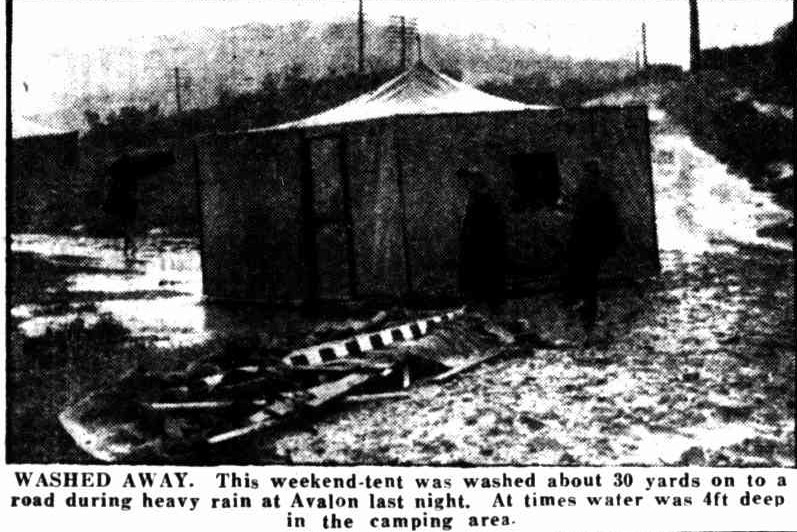
WASHED AWAY. This weekend-tent was washed about 30 yards on to a road during heavy rain at Avalon last night. At times water was 4ft deep in the camping area
NIGHT OF TERROR IN RAIN Campers race for safety More than 50 men and their wives in darkness and drenching rain early this morning waded through four feet of water carrying their children from flooded tents and caravans at Avalon camping area.
Torrents of water swept down from the heights of Avalon and Mona Vale and swirled through the area' at about 2 o'clock this morning. Campers awoke to find water splashing over the floor: They quickly grabbed their children and some belongings and carried them through the water to the caretaker's hut on higher ground. Rush of water carried one tent for over 30 yards. Mrs. Hansen, wife of council employee John Hansen, said. "It was a nightmare. We woke up with water rushing over the floor.
"We grabbed our three kids, Loretta (2), Brian (4) and Barry (20 months) and ran outside. The water was well over my waist." Jack Kelly and his son Barry, ran through the camping area shouting to wake everyone. Camp residents said the flood caused hundreds of pounds worth of damage. Most of them had no dry clothes today. They said the water came with such a rush that they had no time to put their clothes out of its path.
.jpg?timestamp=1616562559779)
One-legged ex-POW Jim Redpath surveys some of the 500 chickens drowned at his Narrabeen poultry farm last night.
Campers swamped
Ambulance men and police in all suburbs had a busy night answering calls to other minor accidents caused by the rain. At 9 am today, backwater from Narrabeen Lakes was sweeping through sections of the Narrabeen camping area. This morning, Warringah Shire Council bulldozers were cutting channels to let the banked-up water out into the sea. Heavy seas pounded the beach, stopping the lakes water from running freely out. Floodwaters have covered Pittwater Rd. north of Narrabeen for stretches up to 200 yards. In places, only high-wheeled traffic could get through, and buses were taking an alternate route out of Narrabeen along Ocean St.
The NRMA In Sydney in the 24 hours up to midnight last night, answered calls to 914 stranded motorists. Rain caused a short circuit of tram wires today at the corner of Marrickville and Victoria Roads, Marrickville, which set alight to a telegraph pole. The Weather Bureau forecasts that heavy rain will continue today, but there is a possibility it will clear tomorrow.
At North Narrabeen, rain flooded Freshville Farm, home of one-legged ex - serviceman Harry Redpath, and drowned hundreds of his 2000 fowls. Newcastle has had more than 10 inches of rain — four inches in six hours today. Up to midday 6 1/2 inches of rain fell in Gosford district in 30 hours. FOUR KILLED ON SLIPPERY ROADS IN HEAVY RAIN (1953, May 2). The Sun (Sydney, NSW : 1910 - 1954), p. 1 (FINAL FOOTBALL LAST RACE). Retrieved from http://nla.gov.au/nla.news-article231042069
WORST FLOOD SYDNEY HAS EVER KNOWN
SYDNEY, Friday.
Sydney suffered its worst flooding in history following torrential cyclonic rain to-day. In near-city country areas, the Hawkesbury and Nepean Rivers rose to near record levels and seriously flooded .surrounding districts.
Northern flood waters claimed two lives to-day, taking the total to three.
The victims to-day' were 43-year-old railway gatekeeper Harold John Michie, of ' Currabubula',' 20 mile from Tamworth, and five -year-old Rhonda Bunn, of Newcastle.
Michie left home to go to work, two miles away and is believed to have been swept off a bridge.
The child was holidaying at Moonan Flat with her grandmother and wandered into a flooded creek.
The body of 18-yenr-old station hand Ronald Faint, of Uralla has not been recovered.. He drowned yesterday in the flooded Werris Creek, six miles from Werris Creek.
Police, have attributed three deaths in the city today to the cyclonic rain. Another person drowned in the country yesterday.
NEPEAN RISING
The Nepean River area, the river height is rising by a foot an hour and the position is critical. A number of Sydney surf boats and crews left to-night for, the area.
On the South Coast, all roads, past Nowra have been closed to traffic.
The Shoalhaven River is rising 'rapidly and serious flooding is expected around Nowra. However, the position is in hand and there is no danger to human life.
A Weather Bureau spokesman said to-night that the depression causing the rain, which was located over S.E: Queensland early yesterday moved just off the coast near Newcastle and had intensified.
Because of this, flood rains spread to Sydney, the Illawarra districts and the Blue Mountains.....
MANY HOMELESS
More than a thousand' people in Sydney to-night are homeless. Penrith was packed with residents' from nearby flooded areas and travellers cut off from their destinations.
Thousands of sightseers severely hampered rescue workers in the flood affected areas.
The State Emergency Service early today dramatically switched Its main resources to the Metropolitan Area, which in the past '24 hours has experienced the heaviest rain for 83 years.
More than 150 servicemen, police and Army personnel using four radio-equipped ducks and any' other craft they could get, battled .throughout the day-many going 18 hours without rest.
Many people were trapped on roofs and used torches to flash SOS signals across the swirling waters.
FARMERS' WARNED
Farmers in the Richmond area have been warned to be prepared to evacuate at a moment's notice, as the river continues to rise at the rate of about 3 ft. an hour.
The Windsor Road from Parramatta has been cut in more than six places and dozens of cars are marooned on it.
THE crisis is expected in the Windsor-Richmond area early to-morrow morning.
At Pittwater on the North Shore, a 30 ft. cutter went aground, three cabin launches were sunk and scores of others broke adrift during the cyclonic rain.
Traffic was brought to a standstill in every section of the Metropolitan Area during the peak hour and interstate shipping had to battle choppy seas miles off shore until there' was a break in the weather. WORST FLOOD SYDNEY HAS EVER KNOWN (1956, February 11). The Canberra Times (ACT : 1926 - 1995), p. 1. Retrieved from http://nla.gov.au/nla.news-article138118870
STATE EMERGENCY SERVICE
During a visit to Sydney earlier this month, the District Engineer, Mr. B. E. Weston, attended a function organised by General Ivan Dougherty, Director of State Emergency Services, to which senior officers of all Services and Departments which had co-operated in the recent food, fodder and rescue operations during the floods were invited.
This included representatives from the Navy, Army, Air Force, Treasury, Railways, Weather Bureau, Police. P.M.G. Communications, Public Service Board and Public Works Dept.
The recent flood provided the first opportunity, for a full scale action by a co-ordinated relief organisation and the Director expressed his great satisfaction with the almost 100 percent results achieved and the harmonious relations which had existed throughout.
He pointed out that, although anything in the nature of a national emergency such as floods or bushfires - would be handled by his organisation, his main job as Director of Civil Defence was to prepare the country to face the results of an atomic bomb attack on the main cities and industrial areas and to organise outback areas to absorb, feed and shelter up to one million people from any such devastated centres. A grim thought, but not one to be overlooked. STATE- EMERGENCY SERVICE (1956, April 27). Western Herald (Bourke, NSW : 1887 - 1970), p. 7. Retrieved from http://nla.gov.au/nla.news-article104013042
The one constant throughout these few hundred years of Hawkesbury floods, and their impacts on Pittwater, has been the way people look after each other and send in skilled people, boats, food, clothing or offer accommodation for those made homeless. That too remains a constant.
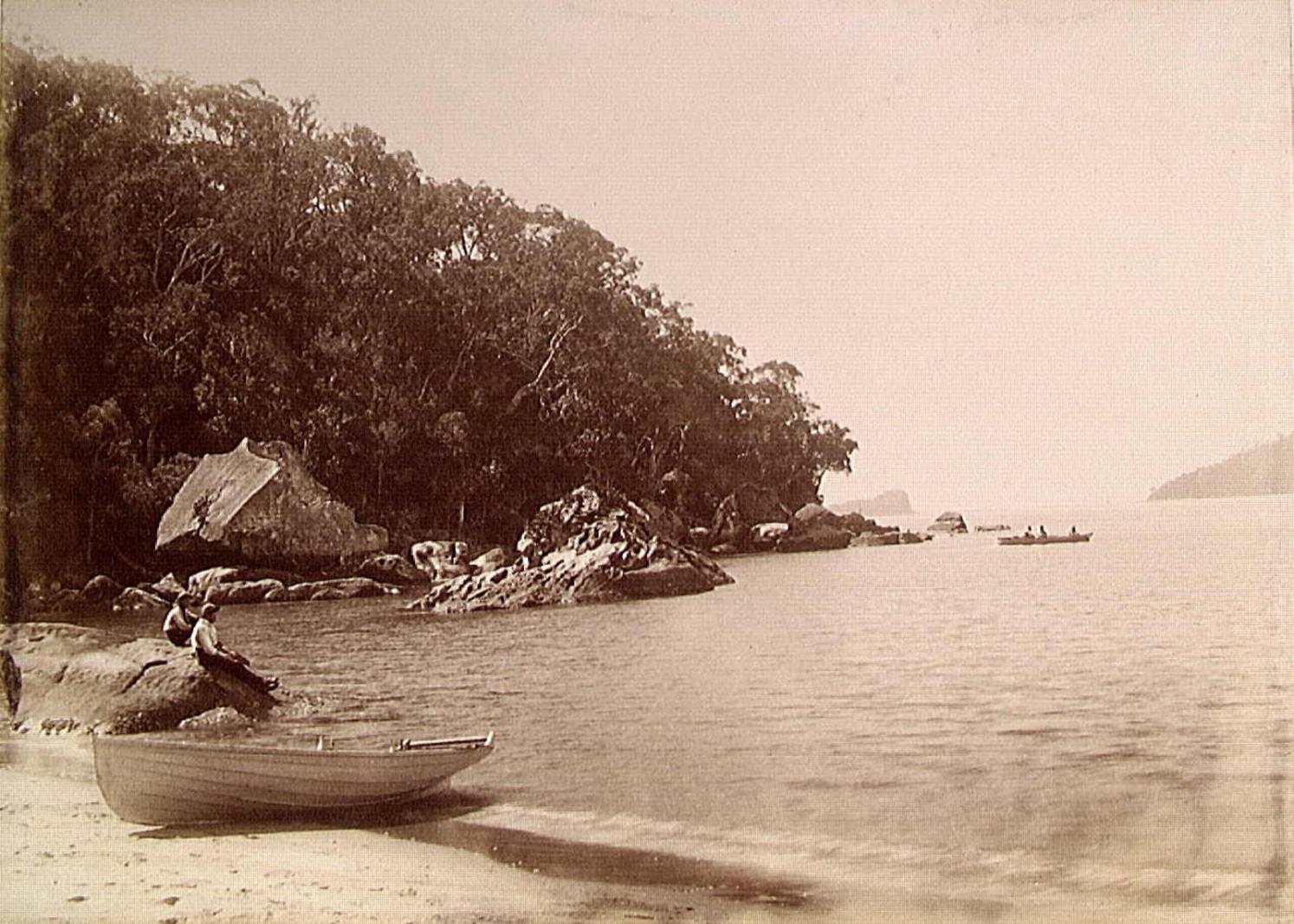
Is actually Resolute or West Head Beach - NB: tip of Lion Island can be seen.
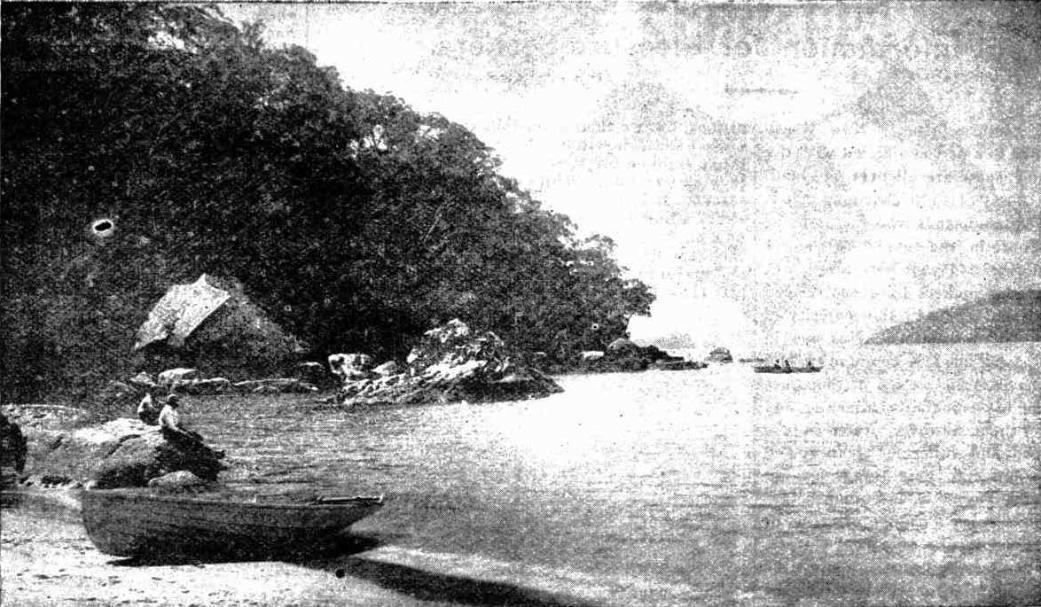
OTHER RESORTS NEAR THE CITY.
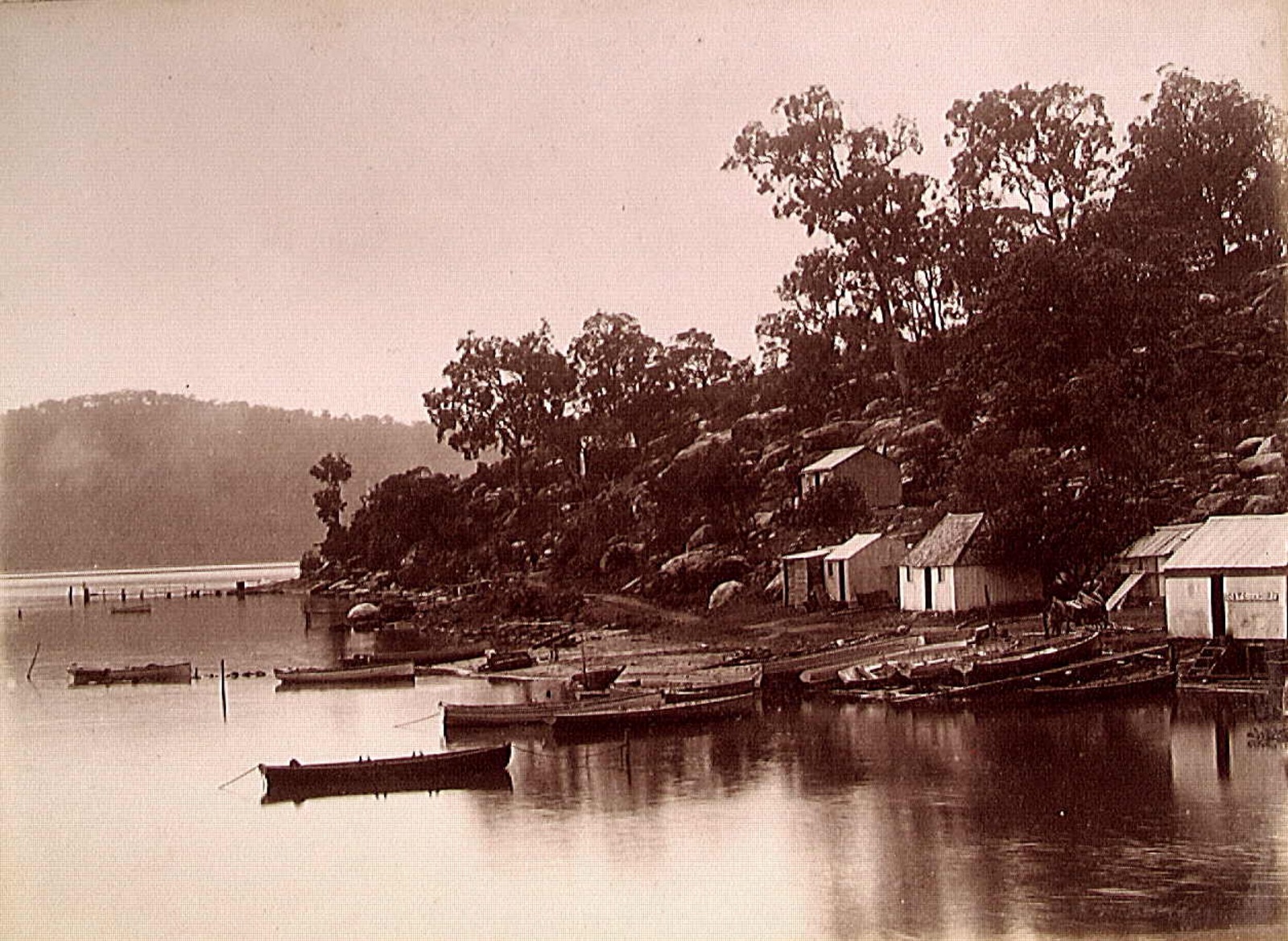
References
- TROVE - National Library of Australia
- Andrew Thompson (of Scotland Island) - Pittwater Patriarch, Round 1
- The First Boat Builders Of Pittwater: The Short Life and Long Voyages Of Scotland Island Schooner The Geordy
- St. Michael’s Arch, Avalon – 1864 To 1962
- The NSW Women's Legal Status Bill 1918: How The 'Petticoat Interference In Government' Came Of Age - A 100 Years Celebration Of Women Alike Our Own Maybanke Selfe-Wolstenholme-Anderson
- Pittwater Fishermen: Great Mackerel, Little Mackerel (Wilson's Beach - Currawong) and The Basin
- Barrenjoey Lighthouse - The Construction
- Pittwater Summer Houses: Rocky Point And Elvina Bay Peninsula - A Place Of Holiday Songs And Operas In Ventnor, Fairhaven, Trincomalee And Maritana
- Part 2 - Our Organisation, Our People: Past, Present, Future. SES Annual Report 2006-07. Retrieved from: https://media.opengov.nsw.gov.au/pairtree_root/0c/e1/85/85/fe/46/23/55/37/d5/1d/70/b7/e9/ac/39/obj/document.pdf
- Pittwater Fishermen: The Sly Family
- Avalon Camping Ground
COMERANG- 1865-82; 198 gross tons, 152 net. Lbd: 144'6" x 22'4" x 6'8'. Wooden paddle steamer of 70 horsepower and built by J Cuthbert at Millers Point, Sydney for the Illawarra S N Co. Sold 1869 to New Zealand interests. 1882 returned to Australia under unknown ownership and eventually converted into a hulk
LAUNCH OF THE STEAMER COMERANG.
THE launch of the steamer Comerang yesterday, from the building-yard of Mr. Cuthbert, at Miller's Point, adds another fine vessel to the steam marine of Port Jackson, and still further developes the resources of New South Wales in that important branch of industry comprehended in ship-building. Some few years ago such an event would have been regarded as extremely novel ; but latterly so many admirable vessels have been built in this port for the colonial trade—and not a few in the same yard as the Comerang—as to deprive a launch of much of its interest to mere sight-seers, though, at the same time, those who have the welfare of the colony at heart must regard every vessel built here as a memorable and gratifying evidence of the advance we are making in that noble art. The steamer which left the stocks yesterday is, we believe, one of the largest built in this port, and was designed by Mr. Cuthbert. It is generally known that most of the ports on this coast have very shallow entrances, and the navigation of the rivers that flow into them is much impeded by flats, which prevent the use of vessels beyond a certain draft of water, unless advantage be taken of the tide. Though much may be accomplished in removing these obstacles by dredging, the physical character of the harbours and rivers can never be materially or permanently altered, and therefore to the shipbuilder belongs the task of overcoming the difficulty by constructing vessels of large carrying capacity and light draft, combined with thorough sea-going qualities. Mere river boats would be altogether unserviceable for the pur-poses of our colonial trade, and this will be readily understood by those persons who have voyaged even to the nearest seaport, the weather on the eastern coast of Australia is frequently very heavy, so heavy indeed as to test the qualities of the finest ships in the world, and it is therefore plain that in grappling with physical disadvantages in the shape of bar harbours and shallow rivers, the builder of vessels for that particular service, trading between one seaport and another, is involved in an important responsibility connected with their safety of such vessels on the ocean.
The loss of the Mynora, one of the Illawarra Company's fleet of steamers, led to the order being given for the building of the Comerang. The reasons that induced the Illawarra Company to have a vessel built on the spot were, we believe, first—that the vessel might be suitably constructed for the trade intended ; and secondly, that the time absorbed in sending to England for a steamer might be saved ; it may be reasonably anticipated that the result will justify the course taken by the company, while the fact of thus giving an impetus to colonial enterprise will also be a gratifying reflection.
The launch took place precisely at half-past four p.m., in the presence of a large concourse of people, who lined not only the wharf, but also the flag-staff height, where an excellent view was obtained. Amongst those persons immediately around the vessel were several members of Parliament and leading merchants, who appeared to take considerable interest in the proceedings. The wedges having been driven in, the shores removed, and the dogshore knocked away, Mrs. Cuthbert gave the vessel her name, and the Comerang slid majestically into the water—the launch being in all respects a very successful one. Loud cheers followed, again repeated, and the steamer was then hauled into the wharf.
The Comerang is a flat-bottomed vessel, 145 feet on the keel, measuring 22 feet beam, with a depth of hold of 7 feet. She is about 400 tons burden, builder's measurement, and will carry 300 tons of cargo on a draft of 3 feet water. When launched she drew 18 inches, and sat most evenly on the water. She has been very strongly built, the frames and beams being of colonial hardwood, diagonally trussed with iron; the knees inside are also of iron. She is to be propelled by paddles, and it is expected the machinery and boilers will be placed on board, and the vessel ready for her trial trip in about six weeks. The hull has been four months in construction, so that within the short space of six months the Comerang will be ready for sea.
After the launch several ladies and gentlemen were invited by Mr. Cuthbert to partake of refreshments at his residence, and "Success to the Comerang" was duly given, and responded to by her builders. LAUNCH OF THE STEAMER COMERANG. (1865, January 24). The Sydney Morning Herald (NSW : 1842 - 1954), p. 4. Retrieved from http://nla.gov.au/nla.news-article13111957
Surf Men in Flood Rescue
SYDNEY, Tues: A mercy trip of 1 1/2 miles was made to East Maitland last night by a boat crew to rescue a 65yearold man who was suffering from pneumonia and a heart attack.
The man, Mr. W. Bailey, was marooned by floods. Manned by five members of the Newcastle Surf Club and carrying an ambulance man and a doctor, the boat made the row through water where the current was strong. High tension and telephone wires at water level provided added hazards. Surf Men In Flood Rescue (1949, June 21). The Daily News (Perth, WA : 1882 - 1950), p. 6 (FINAL). Retrieved from http://nla.gov.au/nla.news-article82387918
Major General Sir Ivan Noel Dougherty, CBE, DSO & Bar, ED (April 6th 1907 – March 4th 1998) was an Australian Army officer during the Second World War and early Cold War period. Born in Leadville, New South Wales, a small town between Dunedoo and Coolah, New South Wales, the son of Isabella Dougherty and a father he never knew. He was educated at Mudgee High School and Sydney Teachers College. In 1928 he became a teacher at Marrickville Junior Technical School (now Marrickville Public School). While teaching by day he completed a four-year Bachelor of Economics degree at the University of Sydney. He transferred to Tingha Public School in 1931 and then to Armidale West Public School.
In 1926, while still at Sydney Teachers' College, Dougherty joined the Sydney University Regiment, in which he was commissioned as a lieutenant on 27 July 1927. He was promoted to captain on 11 September 1931 but was moved to the unattached list in 1932 following his posting to Tingha. His posting to Armidale allowed him to resume his part-time military career, and he joined the 33rd/41st Infantry Battalion on 20 December 1934, and then the 33rd Infantry Battalion when it resumed its separate existence on 1 October 1936. He was promoted to major on 14 February 1938, assumed command of the 33rd Infantry Battalion on 1 December 1938, and was promoted lieutenant colonel on 28 August 1939.
Dougherty returned to Leadville at least once a year to visit his mother. On a visit in 1935, he met Phyllis Lofts, a fellow school teacher who taught at Coonamble High School. They were married at St Stephen's Presbyterian Church in Sydney. This cut short Phyllis's teaching career for the time being, as married women were not permitted to work as teachers at that time. During the Second World War this regulation would be relaxed and she was able to take a position at Goulburn High School. They would eventually have five children: Margaret and Graeme, born before the war, and, later, Maureen, David and Noela.
On the outbreak of the Second World War, Dougherty offered his services to Lieutenant Colonel George Wootten, commander-designate of the 2/2nd Infantry Battalion, as his second-on-command even though this involved a reduction in rank to major. This was accepted and Dougherty joined the Second Australian Imperial Force on 13 October 1939, receiving the AIF serial number of NX148. He was however allowed to retain his substantive rank of lieutenant colonel as an honorary rank, and therefore wear his lieutenant colonel's rank badges. Dougherty embarked from Sydney on 10 January 1940 on the SS Otranto. The ship sailed through the Suez Canal and the battalion moved by rail to an encampment at Julis, a town in the British Mandate of Palestine about 26 km north east of Gaza.
He served in Libya, Greece, Crete and Syria as part of the 2/4th Infantry Battalion. Dougherty arrived back in Palestine after the campaign in Greece to find no mail awaiting him. His mail had been stopped on the order of Major General Iven Mackay who wanted to personally break the sad news to Dougherty that his daughter Margaret had been killed in a playground accident in Mosman, New South Wales. The 2/4th Infantry Battalion rested and re-trained in Palestine before moving to Syria in October 1941. In January 1942 it embarked for Australia.
On arrival in Adelaide Dougherty was informed that he was being promoted to brigadier and given command of the 23rd Infantry Brigade, a part of Major General Edmund Herring's Northern Territory Force. Dougherty was unimpressed with the standard of morale and training of his new command and within weeks he relieved all three of his battalion commanders.
In October 1942, Herring summoned Dougherty to Port Moresby to take over command of the 21st Infantry Brigade from Brigadier Arnold Potts.[29] After making an appreciation of the Gona area, Dougherty decided to bring overwhelming force against small Japanese forces, defeating the enemy in detail. Several days of bitter and costly fighting followed as the 21st Infantry Brigade fought for Gona and the nearby Japanese positions.[30] In the process, the 21st Infantry Brigade was almost annihilated by casualties and disease. Dougherty suffered an attack of malaria and arranged to be admitted to hospital in Goulburn, New South Wales in order to be near his family. For this campaign, Dougherty was awarded a bar to his Distinguished Service Order.
In July 1943 the 21st Infantry Brigade began moving north once more. Following the capture of Kaiapit, the brigade was flown in. Dougherty then carried out a rapid advance into the Ramu Valley culminating in the capture of Dumpu. Dougherty then moved into the Finisterre Range, establishing a toehold on Shaggy Ridge. By utilising speed and surprise to keep the enemy off balance, Dougherty had managed to accomplish the 7th Division's mission. A broken ankle caused Dougherty to be hospitalised at the 2/5th General Hospital in Port Moresby. He rejoined his brigade in early 1944, but only in time for its relief and return to Australia.
Once again the 21st Infantry Brigade assembled at Ravenshoe after taking leave. As amphibious warfare was contemplated for the brigade's next operation, Dougherty observed the invasion of Morotai, sailing on HMAS Kanimbla. Lessons were incorporated into the 7th Division's exercises on the beaches near Cairns, Queensland over the following months. When the 7th Division sailed north again, it was to Morotai.
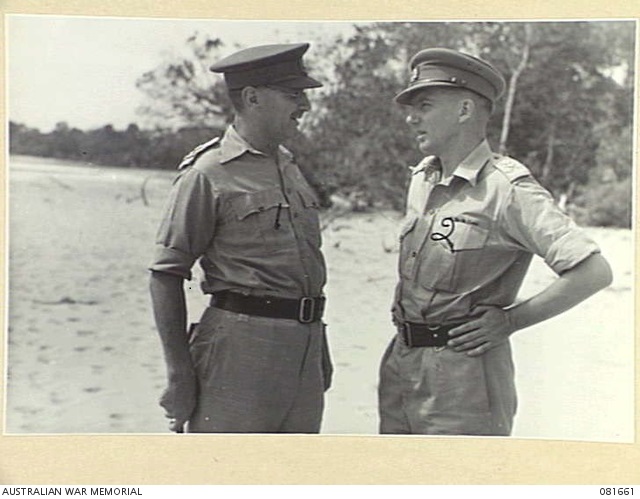
TRINITY BEACH AREA, QUEENSLAND, AUSTRALIA. 1944-10-16. QX6062 BRIGADIER R.J.H. RISSON (1), WITH NX148 BRIGADIER I.N. DOUGHERTY, DSO (2), DISCUSSING THE RESULTS OF DEMOLITIONS BY THE 2/6TH FIELD COMPANY, ROYAL AUSTRALIAN ENGINEERS, DURING 7TH DIVISION AMPHIBIOUS TRAINING EXERCISES. Image courtesy The Australian War Memorial
Dougherty's final battle of the war was at Balikpapan, where the 21st Infantry Brigade landed on July 1st 1945. The Japanese were totally outnumbered and outgunned, but like the other battles of the Pacific War, many of them fought to the death. Despite this, the 7th Division's casualties were significantly lighter than they had suffered in previous campaigns, mainly due to the employment of staggering amounts of firepower. General Douglas MacArthur paid Dougherty a visit on the beachhead while it was still under fire.
Following the surrender of Japan the 21st Brigade was detached to Makassar where Dougherty became Military Governor, a role he had already carried out in Benghazi with the 2/4th Infantry Battalion. Dougherty accepted surrender of the outlying Japanese forces, handled the processing of Japanese POWs and the release of Allied POWs and internees, organised the distribution of food and medical supplies to the civilian population and maintained civil order. In recognition of "gallant and distinguished services in the South West Pacific", Dougherty was made a Commander of the Order of the British Empire in 1947.
Returning to civilian life, Dougherty contested the seat of East Sydney as a Liberal candidate in the 1946 election. The seat was a blue ribbon Labor seat held by Eddie Ward, and Dougherty lost. He returned to teaching, accepting a post as headmaster of Enmore Activity School in 1946. In 1948, he became Inspector of Schools in the Bega District.
He left the New South Wales Education Department in 1955 to become the first Director of the New South Wales Defence Organisation and State Emergency Services, a position he held until retirement in 1972. He was knighted on June 7th 1968 for "services to ex-servicemen and the community".
Dougherty remained in the Army as a reservist. He assumed command of the 8th Infantry Brigade in 1948. He was promoted to major general in 1952 on taking command of the 2nd Division. In 1954, he became the CMF member of the Military Board, which he held until his retirement from the Army in 1957. Dougherty again clashed with Sir Henry Wells, now Chief of the General Staff. Dougherty felt that he should be Chairman of the Military Board when Wells was absent, being the next most senior member. Wells denounced "the impertinence of a part-time soldier wanting to be the chairman of a board of regular soldiers!" Dougherty replied, "No we are all the same, we are all soldiers." In 1960, the Minister for the Army, John Cramer, attempted to appoint Dougherty as Chief of the General Staff in succession to Lieutenant General Sir Ragnar Garrett. The proposal got as far as cabinet, where it was defeated.
Sir Dougherty was a fellow of the Senate of the University of Sydney from 1954 to 1974, and served as Deputy Chancellor from 1958 to 1966. The University awarded him an honorary degree of Doctor of Laws in 1976. The Ivan Dougherty Gallery at the College of Fine Arts, at the University of New South Wales was also named in his honour. As a result, his name is today widely associated with fine art.
After a long illness, Dougherty died on 4 March 1998, survived by Lady Phyllis and his four remaining children. More than 500 people, including an estimated 200 men who had served under him in the Second World War, gathered at St. Andrew's Cathedral, Sydney to pay tribute to him. - Fearnside, G. H.; Clift, Ken (1979), Dougherty: A Great Man Among Men, Sydney: Alpha Books, ISBN 978-0-85553-022-8 and The Australian War Memorial
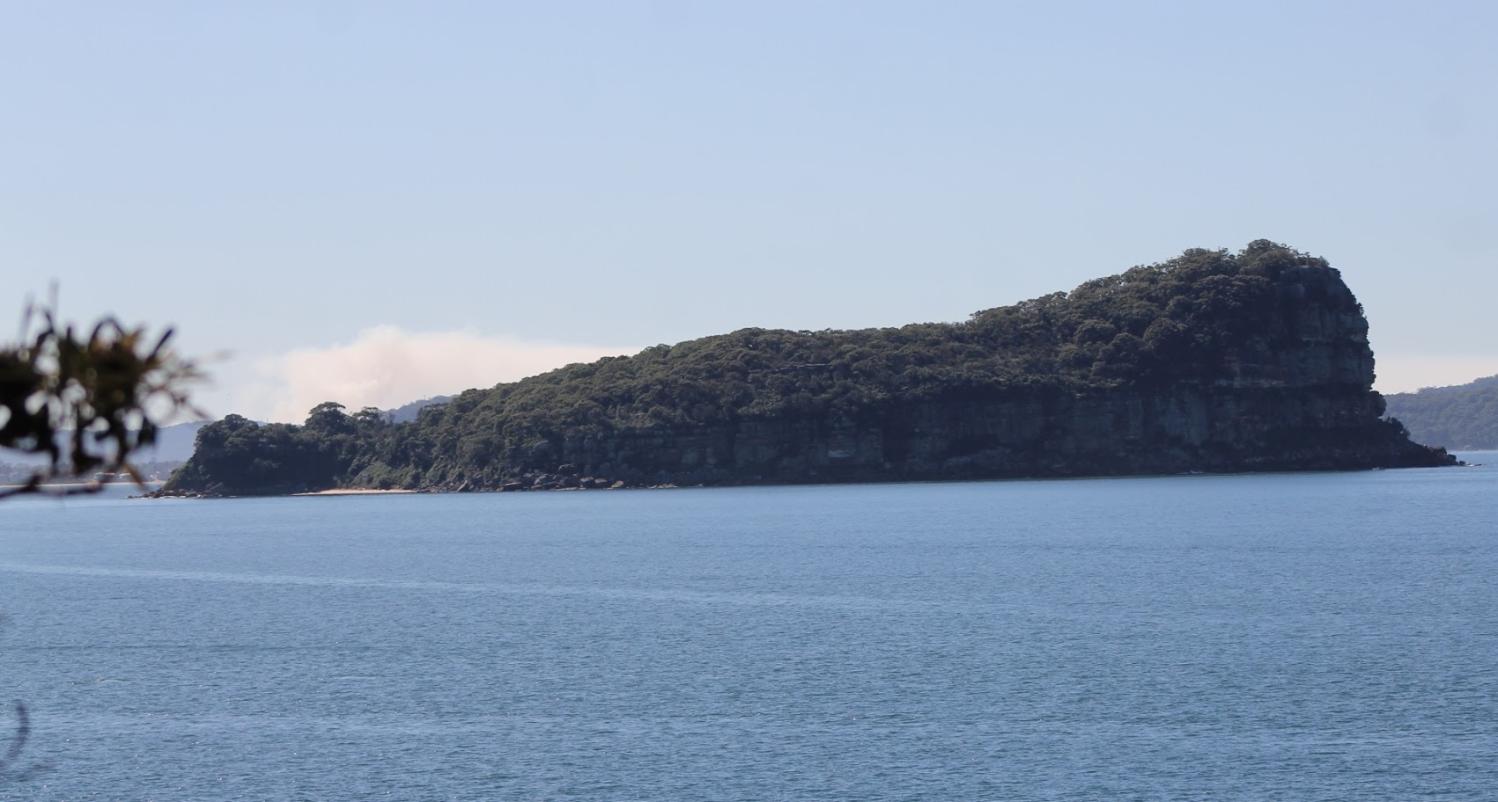
Previous History Pages:
Marie Byles Lucy Gullett Kookoomgiligai Frank Hurley Archpriest JJ Therry Sir Patrick Gordon Taylor Bowen Bungaree W. Bradley 1788 Journal Midholme Loggan Rock Cabin La Corniche La Corniche II Lion Island Bungan Beach Botham Beach Scarred Trees Castles in the Sand Dame Nellie Melba lunches at Bilgola Spring, 1914 First to Fly in Australia at North Narrabeen Mona Vale Golf Club's Annual Balls Governor Phillip camps on Resolute Beach Ruth Bedford Jean Curlewis Mollie Horseman Charlotte Boutin May Moore Neville W Cayley Leon Houreux Frederick Wymark Sir Adrian Curlewis Bilgola Heron Cove Mullet Creek Shark Point Woodley's Cottage A Tent at The Basin Collin's Retreat-Bay View House-Scott's Hotel Bilgola Cottage and House The First Pittwater Regatta Women Cricketers Picnic Filmed In Pittwater Governor Phillip's Barrenjoey Cairn Waradiel Season The Church at Church Point Governor Phillip's Exploration of Broken Bay, 2 - 9 March 1788 Petroglyths: Aboriginal Rock Art on the Northern Beaches Avalon Headland Landmarks Steamers Part I Pittwater Aquatic Club Part I Woody Point Yacht Club Royal Motor Yacht Club Part I Dorothea Mackellar Elaine Haxton Neva Carr Glynn Margaret Mulvey Jean Mary Daly Walter Oswald Watt Wilfrid Kingsford Smith John William Cherry George Scotty Allan McCarrs Creek Narrabeen Creek Careel Creek Currawong Beach Creek Bushrangers at Pittwater Smuggling at Broken Bay An Illicit Still at McCarr's Creek The Murder of David Foley Mona Vale Outrages Avalon Camping Ground Bayview Koala Sanctuary Ingleside Powder Works Palm Beach Golf Course Avalon Sailing Club Mona Vale Surf Life Saving Club Palm Beach SLSC Part I - The Sheds Warriewood SLSC Whale Beach SLSC Flagstaff Hill Mount Loftus Pill Hill Sheep Station Hill S.S. Florrie S.S. Phoenix and General Gordon Paddlewheeler MV Reliance The Elvina Florida House Careel House Ocean House and Billabong Melrose-The Green Frog The Small Yacht Cruising Club of Pittwater Canoe and I Go With The Mosquito Fleet - 1896 Pittwater Regattas Part I - Dates and Flagships to 1950 Shark Incidents In Pittwater The Kalori Church Point Wharf Bayview Wharf Newport Wharf Palm Beach Jetty - Gow's Wharf Max Watt Sir Francis Anderson Mark Foy John Roche Albert Verrills Broken Bay Customs Station At Barrenjoey Broken Bay Water Police Broken Bay Marine Rescue - Volunteer Coastal Patrol Pittwater Fire-Boats Prospector Powder Hulk at Towler's Bay Naval Visits to Pittwater 1788-1952 Pittwater's Torpedo Wharf and Range Naval Sea Cadets in Pittwater S.S. Charlotte Fenwick S.S. Erringhi P.S. Namoi S.Y. Ena I, II and III Barrenjoey Headland - The Lessees Barrenjoey Lighthouse - The Construction Barrenjoey Broken Bay Shipwrecks Up To 1900 Barrenjoey Light Keepers Douglas Adrian Ross Newport SLSC 1909 - 1938 Part I Overview North Narrabeen SLSC - The Formative Years First Naval Exercises by New South Wales Colonial Ships –The Wolverene at Broken Bay Bilgola SLSC - the First 10 years North Palm Beach SLSC A History of Pittwater Parts 1 and 4 Pittwater Regattas - 1907 and 1908 Pittwater Regattas - 1921 - The Year that Opened and Closed with a Regatta on Pittwater Pittwater Regatta Banishes Depression - 1933 The 1937 Pittwater Regatta - A Fashionable Affair Careel Bay Jetty-Wharf-Boatshed Gow-Gonsalves Boatshed -Snapperman Beach Camping at Narrabeen - A Trickle then a Flood Pittwater's Parallel Estuary - The Cowan 'Creek' RMYC Broken Bay Boathouse and Boatshed Barrenjoey Boat House The Bona - Classic Wooden Racing Yacht Mona Vale Hospital Golden Jubilee - A Few Insights on 50 Years as a Community Hospital Far West Children's Health Scheme - the Formation Years The First Scotland Island Cup, Trophy and Race and the Gentleman who loved Elvina Bay Royal Motor Yacht Club Broken Bay NSW - Cruiser Division History - A History of the oldest division in the Royal Motor Yacht Club Royal Motor Yacht Club Broken Bay Early Motor Boats and Yachts, their Builders and Ocean Races to Broken Bay, the Hawkesbury and Pittwater The Royal Easter Show Began As the Royal Agricultural Society of New South Wales The Mail Route to Pittwater and Beyond The Wild Coachmen of Pittwater - A Long and Sometimes Bumpy Ride on Tracks Instead of Roads The Fearless Men of Palm Beach SLSC's Surf Boats First Crews - A Tale of Viking Ships, Butcher Boats and Robert Gow's Tom Thumb 'Canoe' Furlough House Narrabeen - Restful Sea Breezes For Children and Their Mothers From Telegraphs to Telephones - For All Ships at Sea and Those On Land Mona Vale Training Grounds - From Lancers on Horses to Lasses on Transport Courses Fred Verrills; Builder of Bridges and Roads within Australia during WWII, Builder of Palm Beach Afterwards Communications with Pittwater Ferries To Pittwater A History of Pittwater - Part 4: West Head Fortress Pittwater's Lone Rangers - 120 Years of Ku-Ring-Gai Chase and the Men of Flowers Inspired by Eccleston Du Faur Early Pittwater Launches and Ferries Runs Avalon Beach SLSC - The First Clubhouse Avalon Beach SLSC The Second and Third Clubhouses From Beneath the Floorboards at Hyde Park Barracks Bungaree Was Flamboyant Andrew Thompson - 'Long Harry' Albert Thomas Black John Collins of Avalon Narrabeen Prawning Times - A Seasonal Tide of Returnings Oystering in the Pittwater Estuary - Oyster Kings and Pearl Kings and When Not to Harvest Oysters Yabbying In Warriewood Creeks Eeling in Warriewood's Creeks (Includes A Short History of community involvement in environmental issues/ campaigns in and around Narrabeen Lagoon - 1974 to present by David James OAM) Eunice Minnie Stelzer - Pittwater Matriarchs Maria Louisa Therry - Pittwater Matriarchs Manly's Stone Kangaroo, Camera Obscura, First Maze and 'Chute' - Fun Days in Sea Hazes from 1857 On A Salty Tale of the Kathleen Gillett – A Small Reminder and Celebration of Our 70th Sydney to Hobart Katherine Mary Roche - Pittwater Matriarch Sarah A. Biddy Lewis and Martha Catherine Benns Pittwater Matriarchs A Glimpse of the Hawkesbury.(1883) By Francis Myers. Illustrated by J C Hoyte Pittwater's New Cycle Track of 1901 Manly to Newport The Rock Lily Hotel Barrenjoey House The Pasadena Jonah's St Michael's Arch The First Royal Visitor to Australia: the Incident at Clontarf March 12th, 1868 Pittwater: Lovely Arm of the Hawkesbury By NOEL GRIFFITHS - includes RMYC Wharf and Clareville Wharf of 1938 + An Insight into Public Relations in Australia George Mulhall First Champion of Australia in Rowing - First Light-Keeper at Barranjuey Headland Captain Francis Hixson - Superintendent of Pilots, Lights, and Harbours and Father of the Naval Brigade The First Boat Builders of Pittwater I: the Short Life and Long Voyages of Scotland Island Schooner the Geordy The Marquise of Scotland Island Boat Builders of Pittwater II: from cargo schooners and coasters to sailing skiffs and motorised launches 130th Anniversary of Australia’s Sudan Contingent - Local Connections of the first Australians to Serve The Riddles of The Spit and Bayview/Church Point: sailors, boat makers, road pavers and winning rowers The Currawong: Classic Yacht VP Day Commemorative Service 2015 – at Avalon Beach RSL Cenotaph: 70th Anniversary Captain T. Watson and his Captain Cook Statues: A Tribute to Kindness Pittwater Reserves: The Green Ways; Hordern or Wiltshire Parks to McKay Reserve – From Beach to Estuary Pittwater Reserves, The Green Ways: Clareville Wharf and Taylor's Point Jetty Pittwater Reserves: The Green Ways Bilgola Beach - The Cabbage Tree Gardens and Camping Grounds - Includes Bilgola - The Story Of A Politician, A Pilot and An Epicure by Tony Dawson and Anne Spencer Pittwater Reserves - The Green Ways: Mona Vale's Village Greens a Map of the Historic Crown Lands Ethos Realised in The Village, Kitchener and Beeby Parks Pittwater Regatta Air Race Trophies: from 1934 and 1935 and The Pilot Who Saved William Hughes Pittwater Reserves: The Green Ways; Bungan Beach and Bungan Head Reserves: A Headland Garden Early Pittwater Paddlers, Oarsmen, Rowers and Scullers: The Green Family Elanora - Some Early Notes and Pictures The Stewart Towers On Barrenjoey Headland Early Pittwater Paddlers, Oarsmen, Rowers and Scullers: The Williams Family Early Cricket in Pittwater: A small Insight Into the Noble Game from 1880's On The Pacific Club's 2016 Carnival in Rio Fundraiser for Palm Beach SLSC Marks the 79th Year of Support Bert Payne Park, Newport: Named for A Man with Community Spirit Early Pittwater Paddlers, Oarsmen, Rowers and Scullers: The Fox Family Surf Carnivals in February 1909, 1919, 1925, a Fancy Dress Rise of Venus and Saving Lives with Surfboards Early Pittwater Paddlers, Oarsmen, Rowers and Scullers: The Paddon Family of Clareville Mermaid Basin, Mona Vale Beach: Inspired 1906 Poem by Viva Brock Early Pittwater Schools: The Barrenjoey School 1872 to 1894 The Royal Easter Show and 125th Celebration of the Hawkesbury Agricultural College: Farmers Feed Us! The Newport School 1888 to 2016 Pittwater's Ocean Beach Rock Pools: Southern Corners of Bliss - A History The Royal Botanical Garden Sydney Celebrates 200 Years in 2016 The Porter Family of Newport: Five Brother Soldiers Serve in WWI Church Point and Bayview: A Pittwater Public School Set on the Estuary The Basin, Pittwater: A Reprise: Historical Records and Pictures Lighthouse Cottages You Can Rent in NSW - Designed or Inspired by Colonial Architect James Barnet: Includes Historic 'Lit' Days records Bayview Days Ships Biscuits - the At Sea Necessity that Floated William Arnott’s Success Mona Vale Public School 1906 to 2012 St Johns Camden: 176th And 167th Anniversaries In June 2016 - Places To Visit Narrabeen Lagoon And Collaroy Beachfront: Storms And Flood Tides Of The Past Avalon Beach Public School - A History Muriel Knox Doherty Sir Herbert Henry Schlink Shopping And Shops In Manly: Sales Times From 1856 To 1950 For A Fishing Village Sir Edward John Lees Hallstrom Royal Prince Alfred Yacht Club's 150th Sailing Season Opening: A Few Notes Of Old A Few Glimpses Into Narrabeen's Past Beauties Dr. Isobel Ida Bennett AO Taronga Zoo 100th Birthday Parade: 1000 Reasons To Celebrate War Memorials: Manly, October 14, 1916 Avalon Beach Golf Links: Pittwater Fields of Dreams II War Memorials - Mona Vale, November 14, 1926 Annie Wyatt Reserve Palm Beach: Pittwater Fields of Dreams II Tumbledown Dick Hill Waratah Farm and Narrabeen Plums: Pittwater Fields of Dreams II Mark Twain, J.F. Archibald And Henry Lawson - Did They Go Fishing At Narrabeen In The Spring Of 1895?: Probably! Bayview Baths Centenary Celebration in November 2016 hosted by Bayview-Church Point Residents Association Dr. Jenny Rosen's Historical Timeline Palm Beach RSL - Club Palm Beach Celebrating 60 Years Early Years At Narrabeen: The Plane Sailing Day Of 1944 The Five Ways- Six ways Junction; Kamikaze Corner - Avalon Bilgola RPAYC Season on Pittwater and coming of Jubilees in Summer of 1938 Local Explorers’ Modern Day Discovery - Governor Phillip’s First Landing site, Campsite and contact with Local Aborigines in Pittwater: The Case for West Head Beach Rendezvous Tea Rooms Palm Beach: links with 1817 and 1917: Palm Beach Stores and Fishermen St Cloud's Jersey Stud: Elanora Heights: Pittwater Fields of Dreams Roderic Quinn's Poems And Prose For Manly, Beacon Hill, Dee Why And Narrabeen A Historic Catalogue And Record Of Pittwater Art I – Of Places, Peoples And The Development Of Australian Art And Artists: The Estuary Celebrating World Radio Day: The Bilgola Connection With The Beginnings Of Radio In Australia Emile Theodore Argles - champion of all Australians without a Voice - a very funny Satirist, Manly Poet and Pittwater Prose Writer and Litterateur Sydney Harbour Bridge Celebrates 85th Birthday: A Few Pittwater Connections Victor James Daley: A Manly Bard And Poet who also came to Pittwater and the Hawkesbury Let's Go Fly A Kite !: Palm Beach Whistling Kites Inspire sharing How to Make Standard, Box and Whistling Boy Kites - school holidays fun with a bit of Australian and Narrabeen history Clifton Gardens Mosman: An Eternal Green and Saltwater Space, and Of Many Captains Historic Catalogue And Record Of Pittwater Art I: Coastal Landscapes and Seascapes The Bayview Tea Gardens 1920 to 1923 When Run By Thomas Edward And Annie Newey (Nee Costello) An Australian and RPAYC Commodore Aboard an America's Cup Challenger of 1908 and 1914 Henry Lawson - A Manly Bard and Poet: on his 150th Birthday Historic Catalogue and Record of Pittwater Art I: Artists and Artists Colonies Opportunity To Visit Submarine War Grave Renews Memories Of 75 Years Ago Early Bayview - insights courtesy Don Taylor and Margaret Tink Retracing Governor Phillip's Footsteps Around Pittwater: The Mystery Of The Cove On The East Side Early Pittwater Surfers – Palm Beach I: John (Jack) Ralston and Nora McAuliffe Patrick Edward Quinn: A Manly Prose writer who gave us A Run To Pittwater (1889) and Songs for the Federation of Australia Avalon Beach North Headland Indian Face 'Falls': An Everchanging Coastline Nautical Treasure In Suburbia Pittwater: Where the Wild Flowers Are 1917 to 2017 Narani, Captain Cook Celebrations At MVPS And Elvina Bay Memories - 1970s Early Pittwater Surfers – Palm Beach I: Alrema Becke Queen of Palm Beach The Beachcombers Surfboard Riding Club: Palm Beach, NSW - 1959 to 1961 Year Dated Beer Bottles Found at Taylors Point Early Pittwater Surfers: Avalon Beach I - 1956: The Carnival That Introduced The Malibu Surfboard and Being Able To SurfAcross A Wave Face - Reg Wood Anecdotes Mona Vale SLSC To Be Completely Renewed + A Few Insights from the Pages of the Past The Firecracker That Closed Narrabeen Hotel By Ken Lloyd (Savalloyd) + Narrabeen Hotel Licence Transfer Trail Traces Of WWII Coast Watchers Found On Bangalley Headland - 1942 Early Warriewood SLSC insights per Norman Godden + Extras The Macphersons of Wharriewood and Narrabeen: the photo albums of William Joseph Macpherson Angophora Reserve Avalon 1938 Dedication Avalon Preservation Association History by Geoff Searl Pittwater Summer Houses: a 1916 Palm Beach Cottage and Palm Beach House Pittwater YHA: Some History WWI Historian Presents New Film On The Beersheba Charge At Avalon Beach Historical Society Meeting Newport's Bushlink 'From The Crown To The Sea' Paths: Celebrating Over 20 Years Of Community Volunteer Bushcare Results Pittwater Fishermen: The Sly Family Narrabeen Exploits and Manly Community Contributors: The First Surfboat at Manly Beach Women In The Surf Life Saving Movement As Life Savers: From At Least 1910 Locally - Awarded Medals For Saving Lives From 1880 In NSW Windsor Bridge: Planned Destruction Of Historic Link With A Pittwater Connection The Rise Of The Cruising Season: A Look At Some Early Australian sailers and Local Visitor Beauties Pittwater Fishermen: Barranjoey Days Polo By The Sea 2018: Over A Hundred Years Of Loving This Game In Pittwater Australia Day Regatta Began As Anniversary Day Regatta Black Bakelite Telephone: Early Pittwater Phone Numbers Hy-Brasil, Avalon Beach - Pittwater Summer Houses Ferry Names for Emerald Class: The Gibbs-Turner Original Magic Button Pittwater Summer Houses: A Tent At Palm Beach's Governor Phillip Park 'Neath Barrenjoey Pittwater Summer Houses: The Cabin, Palm Beach - The Pink House Of The Craig Family Manly's Early Sand Sculptors: How Pennies Can Become Pounds and Found A New Art Retracing Governor Phillip's Footsteps Around Pittwater: The Mystery Of The Cove On The East Side by Geoff Searl and Roger Sayers 230th Anniversary Edit March 2018 Black-Necked Stork, Mycteria Australis, Once Visited Pittwater: Pair Shot in 1855 Butter Churns: Pittwater Dairies The Drainage System In Thompson Square, Windsor Sydney Royal Easter Show 2018 Show Stopper Beer Brewed By Modus Operandi Mona Vale Extends Locals Input Into RAS Annual Celebration Of Local Products Sydney's Royal Easter Show Showbag Began As An Australian Sample Bag Pittwater Fishermen: Great Mackerel, Little Mackerel (Wilson's Beach - Currawong) and The Basin Motor Car Tours To And In Pittwater Show Us The Way This Place Once Was Some Bayview Memories: The Lloyd Family Tarramatta Park, Mona Vale 1904 The Collaroy Paddle Steamer: New Ephemera Added To Public Accessible Records - Her Connections To Pittwater The Roads And Tracks Of Yesterday: How The Avalon Beach Subdivisions Changed The Green Valley Tracks Australian Sailing's Barranjoey Pin Program; some insights into this Pittwater Yacht and owner, Sir W Northam who won Australia’s first Olympic sailing gold medal at the 1964 Tokyo Olympic Games Avalon Beach Historical Society’s 9th Great Historic Photographic Exhibition: Thousands Of Stories Made Accessible The Hawkesbury River Railway Bridge: Timely Winter Anniversaries and Commemorations For A Septuagenarian and her Predecessor Photographers Of Pittwater Capture Historic Insights: A. J. (Arthur James) Vogan, 1859-1948 Roads To Pittwater: The Wakehurst Parkway Along Old Oxford Falls Track Roads To Pittwater: The Pittwater Road My Holiday by Charles de Boos – 1861 Shark-proof pools at Manly on the Harbourside Dad's Fishing Shack At Long Reef Historic Photographers Of Pittwater: Harold 'Caz' Cazneaux 1878 - 1953 Roads To Pittwater: The Mona Vale Road My Singing Story Barrenjoey High School's 50th Year: History Notes + The Original Barrenjoey School A Bunch Of Wildflowers: Historical Spring September Songs Camden-Campbelltown Hospitals & Carrington Convalescent Hospital: A Mona Vale-Frenchs' Forest Hospitals Comparison With Pittwater History Links The Newport School: 1888 to 2018 A Visit to Bungan Castle by ABHS Roads In Pittwater: The Barrenjoey Road Remembrance Day 2018 - Pittwater Veterans WWI 100 Years From Armistice Day 1918 Filmed in Pittwater: A Sentimental Reprise + Narrabeen Roads In Pittwater: The Bay View Road The NSW Women's Legal Status Bill 1918: How The 'Petticoat Interference In Government' Came Of Age - A 100 Years Celebration Of Women Alike Our Own Maybanke Selfe-Wolstenholme-Anderson Scott Brewster Dillon: A Tribute - He Did It His Way Pittwater Summer Houses: Rocky Point and Elvina Bay - A Place Of Holiday Songs and Operas In Ventnor, Fairhaven, Trincomalee and Maritana Remains Of Captain Matthew Flinders Discovered: Links with Bungaree of Broken Bay Isabella Jessie Wye MBE OAM (Isa) Off To School In 2019 Quicker Than 104 Years Ago Photographers Of Early Pittwater: Charles Bayliss Harold Nossiter's Classic Yachts Pittwater Roads II: Where the Streets Have Your name - Scotland Island Art Deco Inspirations In Palm Beach: The Palladium Dance-Hall, Cafe And Shop - The Surf Pavilion - The Beacon Store Pittwater Roads II: Where the Streets Have Your Name - Newport Beach Professor Christopher John Brennan: A Poet Of Newport Beach M.V. Reliance Turns 100 Avalon Beach Historical Society March 2019 Meeting: Focus On Trappers Way Pittwater Roads II: Where the Streets Have Your name - Clareville Photographers of Early Pittwater: Henry King Photographers Of Early Pittwater: David 'Rex' Hazlewood Richard Hayes Harnett - First Commodore Of The Royal Prince Alfred Yacht Club and Designer Of The Yacht 'Australian' - Based On The Lines Of A Mackerel Pittwater Summer Houses: Waiwera and Hopton Lodge, Bayview The Sirius Circumnavigation (1935-1937): Nossiter Trio Make Australian Sailing History Pittwater Roads II: Where the Streets Have Your name - Avalon Beach Were Manly's Statues, Smashed For Road Ballast, Sculpted By Achille Simonetti? Pittwater Roads II: Where the Streets Have Your name - Warriewood Avalon Beach Historical Society June 2019 Meeting Flint and Steel Guesthouse Pittwater Roads II: Where The Streets Have Your Name - 'Green Hills', Elanora Heights, and Ingleside Ethel Turner's Seven Little Australians Added To UNESCO Memory Of The World Register - The Missing Pages Restored RPAYC To Host 100th Year Of The Scandinavian Gold Cup and 5.5m Worlds In January 2020 - some Etchells Worlds and Gold Cup on Pittwater History Pittwater Roads II - Where the Streets Have Your Name: Mona Vale Pittwater Roads II - Where the Streets Have Your Name - Bungan Shark Meshing 2018/19 Performance Report + Historical Pittwater Shark Notes Anthony Thomas Ruskin Rowe, Spitfire Pilot (1919 To 1943) - Who Defended Darwin And His Mate: An Avalon Beach And Pittwater Hero Newport Surf Club Celebrates 110 Years On October 19, 2019 - A Few Club Firsts Pittwater Roads II - Where the Streets Have Your Name - Bilgola Tram Memorabilia - Historic Daylight Run For Sydney Light Rail Begins 80 Years After Last Tram To Narrabeen Closed Historic Insights From The Australian National Maritime Museums 1890 Pitt Water 'Era' Yacht Collection: The Basin Regattas Pittwater Roads II - Where the Streets Have Your Name - Coaster's Retreat and The Basin Samuel Wood Postcards of Pittwater and Manly Bilgola SLSC Celebrates 70 Years: Anecdotes from Early Members Pittwater Roads II - Where the Streets Have Your Name - Great Mackerel Beach G . E. Archer Russell (1881-1960) and His Passion For Avifauna From Narrabeen To Newport A History Of The Campaign For Preservation Of The Warriewood Escarpment by Angus Gordon and David Palmer Mark Foy of Bayview 2019 Inductee into Australian Sailing Hall of Fame The Victa Lawnmowers Story With A Careel Bay Link Plaque Unveiled To Mark Phenomenal Surfing Revolution Commencement: the 1956 Carnival at Avalon Beach That Introduced The Malibu Surfboard The Other Angels From Avalon: 50th Anniversary Of The IRB Marks The Saving Of Over 100 Thousand Lives The Eos: Classic Pittwater Yachts Pittwater Roads II: Where The Streets Have Your Name - Whale Beach Palm Beach Pavilion To Be Renamed The Lieutenant Colonel Douglas Marks DSO, MC Pavilion - some historical insights Daniel Gordon Soutar's Influence On Local Golf Courses: Some History Notes Pittwater Fire Boats History: January 2020 Tribute Palm Beach Pavilion Renaming Dedication Honours Lieutenant Colonel Douglas Marks DSO, MC Ella McFadyen's Love Of Pittwater: An Environment, Wildlife and Children's Champion Ella McFadyen's Love Of Pittwater: A Children's Champion - shorter version for Children Sydney Bus Museum Volunteers Helps Mona Vale Bus Depot Celebrate 50th Anniversary Of Opening Dorothy Hawkins - a new film by John Illingsworth Dorothy Hawkins' family, father Joseph Homer, ran a dairy near Winnererremy Bay at Mona Vale from 1936 Narrabeen Fire Brigade Celebrates 100th Anniversary + A Few Extra Insights Into Local Fires And Brigade Formations Pittwater, Narrabeen Lagoon & The Collaroy Beachfront: Some Storms and Flood Tides Of The Past - With Pictures The Wolverene At Broken Bay In 1885 Jack 'Bluey' Mercer (January 2nd, 1923 - February 17th, 2020) - West Head Battery in WWII Manly Children's Festival Federation Of A Commonwealth Medals Of 1901 Maybanke Selfe-Wolstenholme-Anderson: 2020 International Womens Day + Pittwater Online 10 Years Celebrations The Bona - Classic Wooden Yacht 2020 Answers North Head Quarantine Station, Manly: Some History - Governor Ralph Darling Saved Australians, Saved Australia Winnererremy Bay: Angus Gordon, the Sequel to Dorothy Hawkins by John Illingsworth Roderic Quinns Poems and Prose For Manly, Beacon Hill, Dee Why And Narrabeen - 10 Year Celebrations and all Manly-Pittwater Poets Series in One Place Stargazing In Pittwater: Historic and Contemporary The Naval Pioneers of Australia by Louis Becke and Walter Jeffrey 1899 Harold Tristram Squire: October 28, 1868 - May 16,1938; Artist of Mona Vale All Is Quiet On The Western Front by Roger Sayers Pittwater Roads II: Where The Streets Have Your Name - Palm Beach Large Sunfish Caught at Barranjuee in 1875 Grace Brook, 1921-2017 by Paul McGrath and Robin Bayes The Pittwater Floating Hotels That Almost Were: Old Paddle Steamers, Fairmiles + A Current 'Lilypad' Pittwater's Ocean Beach Rock Pools: Southern Corners Of Bliss - A History: Updated 2020 Long Reef Aquatic Reserve Celebrates 40th Anniversary Pittwater Roads II: Where The Streets Have Your Name - Careel Bay Careel Bay Reserves and Playing Fields in Careel Bay Playing Fields Reserve - Including Hitchcock Park: Birds, Boots & Beauty North Narrabeen Rock Pool: Some History Narrabeen Lakes Amateur Swimming Club by Maureen Rutlidge, Life Member Avalon Beach North Headland: An Ever-Changing Coastline - Storm Swell Of July 2020 Anthony Thomas Ruskin Rowe, Spitfire Pilot (1919 To 1943) - 75th VP Day Tributes 2020 Walter ('Wal') Williams - VP Day 75th Tributes 2020 Gwenyth Sneesby (nee Forster) 75th VP Day Tributes 2020 Pittwater's Midget Submarine M24 War Grave Renews Memories Of 75 Years Ago Avalon Beach and Surrounds in 1968 and 1970 - Photos Taken By Gary Clist Muriel Knox Doherty of Avalon Beach VP Day 2020 75th Anniversary Tributes Dundundra Falls Reserve: August 2020 photos by Selena Griffith - Listed in 1935 Binishells In Pittwater Schools Bairne Walking Track, Ku-Ring-Gai Chase National Park (Trig Stations) photos by Kevin Murray Pittwater Roads II: Where the Streets Have Your Name - Bayview Perons' Tree Frog At Careel Bay - who is 'Peron'? Pittwater Roads II: Where The Streets Have Your Name - Church Point Stapleton Park Reserve In Spring 2020: An Urban Ark Of Plants Found Nowhere Else Sydney's ACA Building Revitalisation Project Complete: Grand Old Building Has Links To Architects Of St. Patrick's College Manly - Some History Notes Harry Wolstenholme (June 21, 1868 - October 14, 1930) Ornithologist Of Palm Beach, Bird Man Of Wahroonga Three Ferries Named Narrabeen (1883 To 1984) + One Named Barranjoey (1913-1985) Rockley was Cricket for Girls 130 Years Ago - and this Team Visited Narrabeen as well The Bus To Palm Beach: Some History Surf Boats Season Kicks Off At Newport November 14; A Whole Range Of Local Sydney Northern Beaches Branch Carnivals Set To Roll Out Over The 2020-2021 Season + Some History Newport to Bilgola Bushlink 'From The Crown To The Sea' Paths: Founded In 1956 - A Tip and Quarry Becomes Green Space For People and Wildlife Welcome To Country: Neil Evers – NAIDOC Week 2020 Marine Rescue Broken Bay Naming Ceremony for the new BB30 - The Michael Seale Marine Rescue Broken Bay Unit's Beginnings In The Volunteer Coastal Patrol - Some RMYC BB Connections Stokes Point To Taylor's Point: An Ideal Picnic, Camping & Bathing Place Boy Scouts - The Pre-Nippers Life Savers: Some Notes On Local Troops From 1909 Pittwater Roads II: Where the Streets Have Your Name - Narrabeen Warriewood Historic Farmhouse 'Oaklands' by Krisitin Zindel John Illingsworth's Local History; 'The Water Dwellers' 1967, Enemark panoramas of Palm and Whale Beach 1917, 'Paper Run' 1956, John Illingsworth 1921 - 2012: 'A Newport Story Pittwater Summer Houses: 'Cooinoo', Bungan Beach Narrabeen Lagoon Catchment: Worth Looking After Past Notes and Current Photos Pittwater Summer Houses: Ocean Beach House - The Combers, Newport Beach Pittwater Aviatrixes On The Eve Of The RAAF's 100th: A NSW Women's Week - Women Of Aviation Week Celebration Florence Mary Taylor Doreen Mavis 'Bobby' Squire 2021 Tribute Avalon Beach Reserve Heritage Marker For Old Kiosk Installed Landing In Pittwater: That Beach-Estuary-Lagoon Looks Like A Great Place To Touchdown!